Superfund Sites in Reuse in Florida
If you are having trouble viewing the map in your browser, click the 'View larger map' link below
Agrico Chemical Co. 

The 35-acre Agrico Chemical Company Superfund site is located in Pensacola, Florida. It includes an area where agrichemical production operations took place from 1889 to 1975. EPA placed the site on the National Priorities List (NPL) in 1989 because of contaminated groundwater, sludge and soil resulting from facility operations. Cleanup actions by the site’s potentially responsible parties included soil removal, solidification, stabilization and capping. A water line connects homes and businesses to the public water supply. Parts of the site are in ecological reuse as pollinator habitat. The habitat area includes more than 1,700 plants. The site’s planting with pollinator-friendly vegetation also enhanced the remedy, preventing erosion around the engineered cap. Groundwater monitoring is ongoing.
Last updated September 2019
As of December 2019, EPA did not have economic data related to on-site businesses, or economic data were not applicable due to site use. For additional information click here.
For more information:
- Ready for Reuse: Former Pensacola Industrial Property (PDF)(1 pg, 554 K)
- Supporting the Health of Pollinators: Butterfly Habitat at the Agrico Chemical Company Superfund Site (PDF)(2 pp, 1 MB)
- Superfund Site Profile Page
Airco Plating Co. 
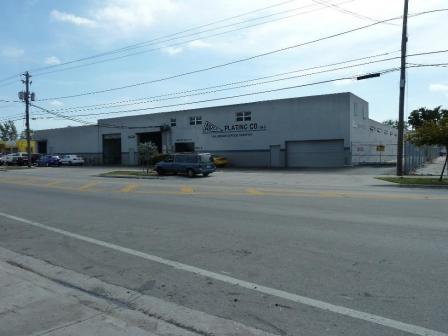 Airco Plating Co.The 2-acre Airco Plating Company Superfund site is part of a commercial and industrial area in Miami, Florida. A metal plating facility has operated on site since 1955. Waste handling practices contaminated soil and groundwater with metals and hazardous chemicals. The main threat posed by the site is the release of contaminants into the Biscayne Aquifer, the main source of drinking water for Miami-Dade County. EPA placed the site on the National Priorities List (NPL) in 1990. EPA’s 1993 cleanup plan included extracting vapors from contaminated soil, capping remaining contaminated soil and treating groundwater. Land use restrictions make sure that site activities do not damage the protective cap or affect the groundwater treatment system. Airco Plating Company continues to operate on site. The company provides plating services to aviation, aerospace and commercial industries. Paradise Awnings operates a small part of its business on the southern portion of the site.
Airco Plating Co.The 2-acre Airco Plating Company Superfund site is part of a commercial and industrial area in Miami, Florida. A metal plating facility has operated on site since 1955. Waste handling practices contaminated soil and groundwater with metals and hazardous chemicals. The main threat posed by the site is the release of contaminants into the Biscayne Aquifer, the main source of drinking water for Miami-Dade County. EPA placed the site on the National Priorities List (NPL) in 1990. EPA’s 1993 cleanup plan included extracting vapors from contaminated soil, capping remaining contaminated soil and treating groundwater. Land use restrictions make sure that site activities do not damage the protective cap or affect the groundwater treatment system. Airco Plating Company continues to operate on site. The company provides plating services to aviation, aerospace and commercial industries. Paradise Awnings operates a small part of its business on the southern portion of the site.
Last updated September 2019
As of December 2019, EPA had data on one on-site business. This business employed 35 people and generated an estimated $4,600,000 in annual sales revenue. For additional information click here.
For more information:
- Sites in Continued Use: Miami Industrial Property (PDF)(1 pg, 342 K)
- Reuse and the Benefit to Community: Airco Plating Co. Superfund Site (PDF)(9 pp, 1 MB)
- Superfund Site Profile Page
Alaric Area GW Plume
The 1.7-acre Alaric Area GW Plume Superfund site is located in the Orient Park area of Tampa, Florida. It includes the former Alaric, Inc. property and several adjacent lots where contaminated groundwater migrated. Several businesses have occupied the site since the early 1970s. From 1978 to 1981, a concrete company operated on site. It built, repaired and refurbished concrete mixing equipment. From 1981 to 1992, Alaric operated a plastics recycling business on site. After that, a street sweeping company operated on the site. Soil and groundwater monitoring by EPA and the Florida Department of Environmental Protection in the late 1990s found significant amounts of chlorinated solvents in soil and groundwater. EPA placed the site on the National Priorities List (NPL) in December 2000. Since 2003, cleanup activities have included removal of the shallow soil contamination and septic tank believed to be the main source of chlorinated solvents, treatment of contaminated soil using chemical oxidation and thermal heating, and pumping and treatment of contaminated groundwater. These cleanup actions were followed by thermal heating of source zone soils to remediate areas with high solvent concentrations. The final phase of soil treatment finished in November 2017. Upon completion of site restoration in May 2018, a new owner purchased the site with the intention to rehabilitate and lease the formally unoccupied on-site metal building. EPA worked closely with the new owner to support reuse that would be protective of the site remedy. EPA conducted three vapor intrusion studies and installed a vapor mitigation system prior to tenant occupancy. The 5,000-square-foot metal building is currently leased by a lawn service company. The company uses the property for office space and lawn equipment storage and maintenance. EPA continues to monitor groundwater temperature and decline of contaminant levels following thermal treatment of source areas.
Last updated September 2019
As of December 2019, EPA did not have economic data related to on-site businesses, or economic data were not applicable due to site use. For additional information click here.
For more information:
- Sites in Reuse: Alaric Area Groundwater Plume Superfund Site in Tampa, Florida (PDF)(1 pg, 1.3 MB)
- Superfund Site Profile Page
Alpha Chemical Corp. 
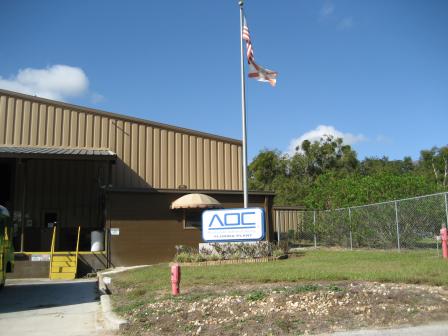 Alpha Chemical Corp.The Alpha Chemical Corporation Superfund site is located in Kathleen, Florida. Since 1967, a plant on site has produced polyester resin for fiberglass manufacturers. From 1967 to 1976, plant operators discharged plant wastewater, which contained small amounts of volatile organic compounds, into an on-site pond. In 1983, EPA placed the site on the National Priorities List (NPL). Cleanup activities included placing a protective cap over the former unlined pond area and monitoring surface water and groundwater. After cleanup, EPA deleted the site from the NPL in 1995. Monitoring results show that the site is protective of human health and the environment. The site has met the requirements to allow for unlimited future uses with no restrictions needed to prevent exposure to contamination. The plant continues to operate on site.
Alpha Chemical Corp.The Alpha Chemical Corporation Superfund site is located in Kathleen, Florida. Since 1967, a plant on site has produced polyester resin for fiberglass manufacturers. From 1967 to 1976, plant operators discharged plant wastewater, which contained small amounts of volatile organic compounds, into an on-site pond. In 1983, EPA placed the site on the National Priorities List (NPL). Cleanup activities included placing a protective cap over the former unlined pond area and monitoring surface water and groundwater. After cleanup, EPA deleted the site from the NPL in 1995. Monitoring results show that the site is protective of human health and the environment. The site has met the requirements to allow for unlimited future uses with no restrictions needed to prevent exposure to contamination. The plant continues to operate on site.
Last updated September 2019
As of December 2019, EPA had data on 2 on-site businesses. These businesses employed 72 people and generated an estimated $67,756,000 in annual sales revenue. For additional information click here.
For more information:
Anaconda Aluminum Co./Milgo Electronics Corp.
 Anaconda Aluminum Co./Milgo Electronics Corp.The 3-acre Anaconda Aluminum Co./Milgo Electronics Corp. Superfund site is located in Miami, Florida. It consists of the adjacent 1-acre Anaconda and 2-acre Milgo sites. Anaconda Aluminum Company conducted electrochemical processing using acids and an aluminum-laden caustic base. This processing produced a film of protective coating on aluminum. From 1961 to 1984, Milgo Electronics performed chrome, nickel and copper electroplating of data processing equipment. Milgo Electronics also made cabinets for electronic components. Both companies disposed of liquid wastes into on-site drain fields. Sampling in 1987 found cyanide and heavy metals in area groundwater. The widespread contamination resulted from former manufacturing and process waste disposal practices. Sediment, surface water and soils also contained heavy metals. The contaminated groundwater plume reached the Biscayne Aquifer, the primary source of drinking water for South Florida. This groundwater contamination led to EPA placing the site on the National Priorities List (NPL) in 1990. Cleanup activities included the excavation and proper disposal of contaminated soil. After groundwater monitoring verified the effectiveness of the removal action, EPA took the site off the NPL in 1998. The former Anaconda facility is now in reuse as a warehouse. The former Milgo Electronics facility now hosts commercial and industrial businesses, including a boat manufacturing company.
Anaconda Aluminum Co./Milgo Electronics Corp.The 3-acre Anaconda Aluminum Co./Milgo Electronics Corp. Superfund site is located in Miami, Florida. It consists of the adjacent 1-acre Anaconda and 2-acre Milgo sites. Anaconda Aluminum Company conducted electrochemical processing using acids and an aluminum-laden caustic base. This processing produced a film of protective coating on aluminum. From 1961 to 1984, Milgo Electronics performed chrome, nickel and copper electroplating of data processing equipment. Milgo Electronics also made cabinets for electronic components. Both companies disposed of liquid wastes into on-site drain fields. Sampling in 1987 found cyanide and heavy metals in area groundwater. The widespread contamination resulted from former manufacturing and process waste disposal practices. Sediment, surface water and soils also contained heavy metals. The contaminated groundwater plume reached the Biscayne Aquifer, the primary source of drinking water for South Florida. This groundwater contamination led to EPA placing the site on the National Priorities List (NPL) in 1990. Cleanup activities included the excavation and proper disposal of contaminated soil. After groundwater monitoring verified the effectiveness of the removal action, EPA took the site off the NPL in 1998. The former Anaconda facility is now in reuse as a warehouse. The former Milgo Electronics facility now hosts commercial and industrial businesses, including a boat manufacturing company.
Last updated September 2019
As of December 2019, EPA had data on 3 on-site businesses. These businesses employed 5 people and generated an estimated $2,141,000 in annual sales revenue. For additional information click here.
For more information:
- Sites in Reuse: Miami-Dade County Industrial Property (PDF)(1 pg, 1.3 MB)
- Superfund Site Profile Page
Anodyne, Inc.
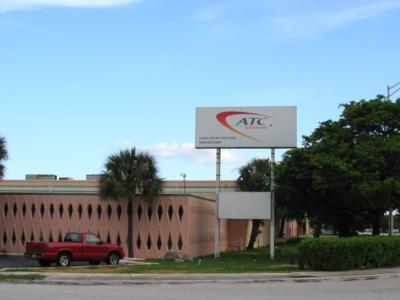 Anodyne, Inc.The 4-acre Anodyne, Inc. Superfund site is located in Sunshine State Industrial Park in Miami Gardens, Florida. Between 1960 and 1978, Anodyne and other companies conducted a variety of industrial operations on site. Consumer products made at the facility included decorative trim, control panels and equipment dials. Site operators stored chemicals in aboveground tanks on site. They also disposed of wastes directly on the ground outside. Sources indicate that site operators may have disposed of waste in a deep on-site well. These improper storage and disposal practices contaminated groundwater and soil. The site overlies the Biscayne Aquifer, which is the primary source of drinking water for Miami-Dade and Broward counties. EPA placed the site on the National Priorities List (NPL) in 1990. A 1993 cleanup plan included removal and replacement of contaminated soil as well as groundwater treatment and disposal. In 2016, EPA updated the remedy to address groundwater contamination. Groundwater treatment and long-term monitoring plans will be implemented once the design is completed. EPA Region 4’s Prospective Purchaser Inquiry (PPI) process supported the reuse of the site. The PPI process offers prospective purchasers fast, accurate and comprehensive information. Prospective purchasers are then able to make timely purchasing decisions. Today, several commercial businesses, including a communications business, an industrial supply company and a security firm office, operate in the former Anodyne facility.
Anodyne, Inc.The 4-acre Anodyne, Inc. Superfund site is located in Sunshine State Industrial Park in Miami Gardens, Florida. Between 1960 and 1978, Anodyne and other companies conducted a variety of industrial operations on site. Consumer products made at the facility included decorative trim, control panels and equipment dials. Site operators stored chemicals in aboveground tanks on site. They also disposed of wastes directly on the ground outside. Sources indicate that site operators may have disposed of waste in a deep on-site well. These improper storage and disposal practices contaminated groundwater and soil. The site overlies the Biscayne Aquifer, which is the primary source of drinking water for Miami-Dade and Broward counties. EPA placed the site on the National Priorities List (NPL) in 1990. A 1993 cleanup plan included removal and replacement of contaminated soil as well as groundwater treatment and disposal. In 2016, EPA updated the remedy to address groundwater contamination. Groundwater treatment and long-term monitoring plans will be implemented once the design is completed. EPA Region 4’s Prospective Purchaser Inquiry (PPI) process supported the reuse of the site. The PPI process offers prospective purchasers fast, accurate and comprehensive information. Prospective purchasers are then able to make timely purchasing decisions. Today, several commercial businesses, including a communications business, an industrial supply company and a security firm office, operate in the former Anodyne facility.
Last updated September 2019
As of December 2019, EPA had data on 4 on-site businesses. These businesses employed 45 people and generated an estimated $10,595,000 in annual sales revenue. For additional information click here.
For more information:
- Sites in Continued Use: Dade County Industrial Property (PDF)(1 pg, 1.4 MB)
- Superfund Site Profile Page
Arkla Terra Property
The Arkla Terra Property Superfund site is located in Thonotosassa, Florida. From 1976 to 2006, several companies repaired and refurbished containers and underground storage tanks on site. Operators used solvents to clean the tanks. In 2000, the Florida Department of Environmental Protection (FDEP) found that site activities had contaminated soil and groundwater. EPA placed the site on the National Priorities List (NPL) in 2009. EPA began cleanup in 2011. In February 2013, EPA completed treating the source area with heat to remove contamination from the subsurface. EPA selected the site’s final remedy in August 2018. It includes groundwater monitoring and connection of several properties to the public water supply. Today, several commercial businesses are located on site. These businesses include an accounting company, a communications company and a trucking company.
Last updated September 2019
As of December 2019, EPA had data on 3 on-site businesses. These businesses employed 12 people and generated an estimated $5,578,000 in annual sales revenue. For additional information click here.
For more information:
B&B Chemical Co., Inc.
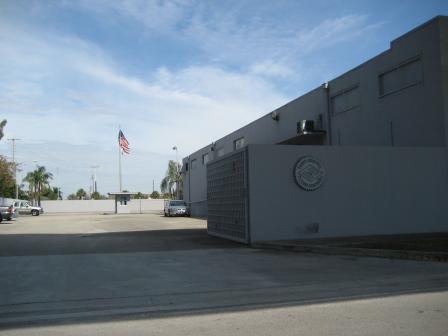 B&B Chemical Co., Inc.The 4.5-acre B&B Chemical Co., Inc. Superfund site is located in Hialeah, Florida. In 1963, B&B Tritech (B&B) began making and mixing industrial cleaning products at the site. Many of the chemical containers rusted and broke, spilling their contents onto the ground. In 1981, construction workers working on a water pipe near the site reported skin irritation and burns. In 1985, an EPA investigation found that facility operations and waste handling practices at the site had contaminated soil and groundwater. EPA placed the site on the National Priorities List (NPL) in 1990 and began monitoring groundwater. As a result of treatment and monitoring, groundwater meets state and federal drinking water standards. Land use restrictions prevent potential human exposure to site-related contaminants. After cleanup, EPA took the site off the NPL in 2014. B&B still owns the site property and operates on site, but it does not make industrial cleaning compounds at the site.
B&B Chemical Co., Inc.The 4.5-acre B&B Chemical Co., Inc. Superfund site is located in Hialeah, Florida. In 1963, B&B Tritech (B&B) began making and mixing industrial cleaning products at the site. Many of the chemical containers rusted and broke, spilling their contents onto the ground. In 1981, construction workers working on a water pipe near the site reported skin irritation and burns. In 1985, an EPA investigation found that facility operations and waste handling practices at the site had contaminated soil and groundwater. EPA placed the site on the National Priorities List (NPL) in 1990 and began monitoring groundwater. As a result of treatment and monitoring, groundwater meets state and federal drinking water standards. Land use restrictions prevent potential human exposure to site-related contaminants. After cleanup, EPA took the site off the NPL in 2014. B&B still owns the site property and operates on site, but it does not make industrial cleaning compounds at the site.
Last updated September 2019
As of December 2019, EPA had data on one on-site business. This business employed 32 people and generated an estimated $7,120,000 in annual sales revenue. For additional information click here.
For more information:
Beulah Landfill 
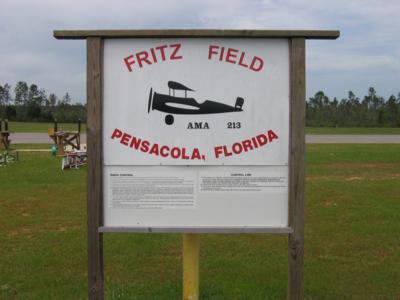 Beulah LandfillThe 101-acre Beulah Landfill Superfund site is located in Escambia County, Florida. Escambia County operated a landfill on site from 1966 to 1984. A state investigation in 1987 found that site activities had contaminated soil and groundwater. In 1990, EPA placed the site on the National Priorities List (NPL). The cleanup approach is to close the landfill in accordance with the Florida Department of Environmental Protection (FDEP) landfill closure program. The site’s responsible party, Escambia County, is performing required cleanup activities under the state program. Landfill closure included capping, monitoring groundwater and removing contaminated soil located outside the capped areas. Land use controls limit future site development. In 1998, EPA took the site off the NPL. Groundwater monitoring is ongoing under the state program. Following reuse discussions in the community, Northwest Florida Modelers, a local model airplane club, came to an agreement with Escambia County to use the site for flying model airplanes. Today, part of Beulah Landfill is known as Fritz Field, a model airplane flying park. Funds generated by the airplane club are used for maintenance of Fritz Field. Escambia County, EPA and FDEP converted this former landfill property into a valuable asset that provides open-space recreation opportunities for the community.
Beulah LandfillThe 101-acre Beulah Landfill Superfund site is located in Escambia County, Florida. Escambia County operated a landfill on site from 1966 to 1984. A state investigation in 1987 found that site activities had contaminated soil and groundwater. In 1990, EPA placed the site on the National Priorities List (NPL). The cleanup approach is to close the landfill in accordance with the Florida Department of Environmental Protection (FDEP) landfill closure program. The site’s responsible party, Escambia County, is performing required cleanup activities under the state program. Landfill closure included capping, monitoring groundwater and removing contaminated soil located outside the capped areas. Land use controls limit future site development. In 1998, EPA took the site off the NPL. Groundwater monitoring is ongoing under the state program. Following reuse discussions in the community, Northwest Florida Modelers, a local model airplane club, came to an agreement with Escambia County to use the site for flying model airplanes. Today, part of Beulah Landfill is known as Fritz Field, a model airplane flying park. Funds generated by the airplane club are used for maintenance of Fritz Field. Escambia County, EPA and FDEP converted this former landfill property into a valuable asset that provides open-space recreation opportunities for the community.
Last updated September 2019
As of December 2019, EPA did not have economic data related to on-site businesses, or economic data were not applicable due to site use. For additional information click here.
For more information:
BMI-Textron
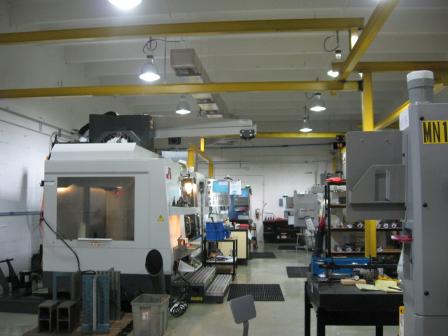 BMI-TextronThe 3.4-acre Basic Microelectronics, Inc. (BMI)-Textron Superfund site is located in Lake Park, Florida. BMI began manufacturing operations in Tri-City Industrial Park in 1969. Textron purchased BMI in 1981. BMI-Textron made chromium-backed glass plates used in electronic parts. Site operators disposed of liquid process waste containing cyanide in on-site ponds and drain fields. In 1984, a state investigation found that site activities had contaminated soil and groundwater. The business closed in early 1986. The site’s potentially responsible party, BMI-Textron, cleaned up contaminated soil in 1984 and 1990. EPA placed the site on the National Priorities List (NPL) in 1990. Cleanup activities also included groundwater monitoring and site access restrictions. Following cleanup, EPA took the site off the NPL in November 2002. Commercial and light industrial use continued at the site during cleanup. Today, Florida Aero Precision operates an aerospace parts manufacturing facility in the former BMI-Textron building. The company makes turbine engine parts for industrial gas turbines and flight turbines. Other businesses on site include a furniture manufacturer, electrical, masonry and cabinetry contractors, a cleaning company, and a flooring company.
BMI-TextronThe 3.4-acre Basic Microelectronics, Inc. (BMI)-Textron Superfund site is located in Lake Park, Florida. BMI began manufacturing operations in Tri-City Industrial Park in 1969. Textron purchased BMI in 1981. BMI-Textron made chromium-backed glass plates used in electronic parts. Site operators disposed of liquid process waste containing cyanide in on-site ponds and drain fields. In 1984, a state investigation found that site activities had contaminated soil and groundwater. The business closed in early 1986. The site’s potentially responsible party, BMI-Textron, cleaned up contaminated soil in 1984 and 1990. EPA placed the site on the National Priorities List (NPL) in 1990. Cleanup activities also included groundwater monitoring and site access restrictions. Following cleanup, EPA took the site off the NPL in November 2002. Commercial and light industrial use continued at the site during cleanup. Today, Florida Aero Precision operates an aerospace parts manufacturing facility in the former BMI-Textron building. The company makes turbine engine parts for industrial gas turbines and flight turbines. Other businesses on site include a furniture manufacturer, electrical, masonry and cabinetry contractors, a cleaning company, and a flooring company.
Last updated September 2019
As of December 2019, EPA had data on 9 on-site businesses. These businesses employed 76 people and generated an estimated $8,848,941 in annual sales revenue. For additional information click here.
For more information:
- Site Redevelopment Profile for the BMI-Textron and Trans Circuits, Inc. Superfund Sites (PDF)(3 pp, 2.3 MB)
- Sites in Continued Use: Lake Park Industrial Property (PDF)(1 pg, 1.3 MB)
- Superfund Site Profile Page
Brown's Dump 

The Brown’s Dump Superfund site occupies about 250 acres in Jacksonville, Florida. The city of Jacksonville (City) used the area as a landfill for incinerator ash from the 1940s until 1953. When the landfill closed, the Duval County School Board acquired the site property. The school board built an elementary school over the former landfill. The site also includes a Jacksonville Electric Authority (JEA) electrical substation and residences. Sampling of area soil found lead and other contaminants from incinerator ash in the landfill. A site inspection by EPA in 1998 determined that cleanup actions would be required. EPA did not list the site on the National Priorities List (NPL) but considers it an NPL-caliber site and is addressing it through the Superfund Alternative Approach. The City agreed to conduct cleanup activities. The cleanup plan, developed in 2006, required removal of contaminated soils and replacement with clean soil. In total, cleanup addressed a former school property and about 216 residential properties, allowing residents to continue living safely in their homes. Single-family homes and multi-unit apartments currently occupy areas around the original landfill. JEA also continues to operate an electrical substation on 2 acres of the site. In 2012, White Harvest Farms, an 11-acre urban farm operated by the Clara White Mission, began operating at the site. The teaching farm invites children from local schools to learn about agriculture and earth science. Farm produce is sold at an on-site farmers market that helps fund the Mission and also incorporated into meals for disadvantaged community members.
Last updated September 2020
As of December 2019, EPA had data on 6 on-site businesses. These businesses employed 12 people and generated an estimated $1,229,701 in annual sales revenue. For additional information click here.
For more information:
- USDA's #Fridaysonthefarm: Growing Hope at Clara White Mission Story MapExit
- Sites in Reuse: Jacksonville Ash and Brown's Dump Superfund Alternative Sites (PDF)(2 pp, 2.2 MB)
- Press Release: Excellence in Site Reuse Award
- Superfund Site Profile Page
Cabot/Koppers 
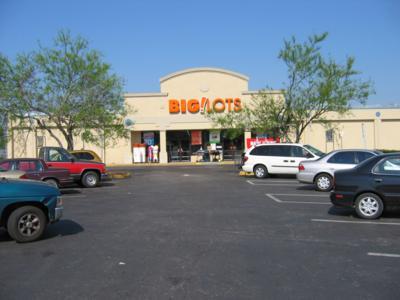 Cabot/KoppersThe 140-acre Cabot-Koppers Superfund site is located in Gainesville, Florida. Beazer East and the Cabot Carbon Corporation are the responsible parties for the cleanup of the two site properties. The Koppers property includes 90 acres on the western part of the site. The Cabot property covers 50 acres on the eastern part of the site. The Koppers property includes the area where a wood treatment facility operated between 1916 and 2009. The Cabot property includes areas where tar, turpentine and charcoal were made from 1908 to 1967. In 1984, EPA placed the site on the National Priorities List (NPL) because of soil and groundwater contamination. Cleanup included pumping and treating contaminated groundwater; this remedy has been in operation for over 20 years. EPA updated the remedy in 2011, requiring additional cleanup of soils and groundwater by Beazer East and the Cabot Carbon Corporation. This cleanup effort is ongoing and should be completed in 2020. A shopping mall, car dealership and several other businesses currently operate on portions of the Cabot property. The Koppers property is not currently in use. EPA is exploring reuse and redevelopment options with the local government and community for the Koppers property for after completion of cleanup construction work.
Cabot/KoppersThe 140-acre Cabot-Koppers Superfund site is located in Gainesville, Florida. Beazer East and the Cabot Carbon Corporation are the responsible parties for the cleanup of the two site properties. The Koppers property includes 90 acres on the western part of the site. The Cabot property covers 50 acres on the eastern part of the site. The Koppers property includes the area where a wood treatment facility operated between 1916 and 2009. The Cabot property includes areas where tar, turpentine and charcoal were made from 1908 to 1967. In 1984, EPA placed the site on the National Priorities List (NPL) because of soil and groundwater contamination. Cleanup included pumping and treating contaminated groundwater; this remedy has been in operation for over 20 years. EPA updated the remedy in 2011, requiring additional cleanup of soils and groundwater by Beazer East and the Cabot Carbon Corporation. This cleanup effort is ongoing and should be completed in 2020. A shopping mall, car dealership and several other businesses currently operate on portions of the Cabot property. The Koppers property is not currently in use. EPA is exploring reuse and redevelopment options with the local government and community for the Koppers property for after completion of cleanup construction work.
Last updated September 2019
As of December 2019, EPA had data on 20 on-site businesses. These businesses employed 225 people and generated an estimated $55,285,000 in annual sales revenue. For additional information click here.
For more information:
- Sites in Continued Use: Gainesville Commercial Property (PDF)(1 pg, 440 K)
- Cabot Carbon/Koppers, Gainesville, FL - Reuse Assessment (PDF) (4 pp, 2.9 MB)
- Superfund Site Profile Page
Cascade Park Gasification Plant 


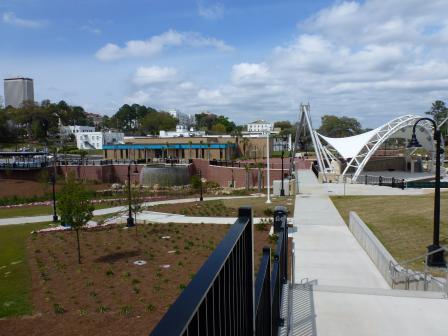 Cascade Park Gasification PlantThe 10-acre Cascade Park Gasification Plant site is located in Tallahassee, Florida. From 1895 until the mid-1950s, the city of Tallahassee (the City) operated a manufactured gas plant (MGP) on site. The plant turned coal into gas to provide light and heat for city residents. A city-owned landfill opened on site in the 1920s and accepted waste from the MGP. In 1987, the state of Florida and EPA determined that site activities and waste management practices had contaminated soil, sediment and groundwater. The City and the Florida Department of Environmental Protection worked with EPA to clean up the site under a non-time-critical removal action. Cleanup activities in 2006 included removing 98,000 tons of contaminated soil, capping residual contamination, restoring a creek and sampling groundwater. The community developed a reuse plan that would manage stormwater, create a public park, preserve local natural resources and celebrate the site’s history. In 2008, EPA Region 4 recognized the community’s planning efforts with its Excellence in Site Reuse award. In April 2010, the City and Blueprint 2000, a local intergovernmental agency, continued the removal action and began construction of the 24-acre Cascades Park. The park includes the former MGP property. Cascades Park officially opened in March 2014. Over 1,000 people attended the opening ceremony. Park features include 2.3 miles of trails, playgrounds, a waterfall, interactive fountains, a war memorial, and an amphitheater for concerts and community events. In February 2019, EPA completed the groundwater remedial investigation with a no further remedial action Record of Decision.
Cascade Park Gasification PlantThe 10-acre Cascade Park Gasification Plant site is located in Tallahassee, Florida. From 1895 until the mid-1950s, the city of Tallahassee (the City) operated a manufactured gas plant (MGP) on site. The plant turned coal into gas to provide light and heat for city residents. A city-owned landfill opened on site in the 1920s and accepted waste from the MGP. In 1987, the state of Florida and EPA determined that site activities and waste management practices had contaminated soil, sediment and groundwater. The City and the Florida Department of Environmental Protection worked with EPA to clean up the site under a non-time-critical removal action. Cleanup activities in 2006 included removing 98,000 tons of contaminated soil, capping residual contamination, restoring a creek and sampling groundwater. The community developed a reuse plan that would manage stormwater, create a public park, preserve local natural resources and celebrate the site’s history. In 2008, EPA Region 4 recognized the community’s planning efforts with its Excellence in Site Reuse award. In April 2010, the City and Blueprint 2000, a local intergovernmental agency, continued the removal action and began construction of the 24-acre Cascades Park. The park includes the former MGP property. Cascades Park officially opened in March 2014. Over 1,000 people attended the opening ceremony. Park features include 2.3 miles of trails, playgrounds, a waterfall, interactive fountains, a war memorial, and an amphitheater for concerts and community events. In February 2019, EPA completed the groundwater remedial investigation with a no further remedial action Record of Decision.
Last updated September 2019
As of December 2019, EPA did not have economic data related to on-site businesses, or economic data were not applicable due to site use. For additional information click here.
For more information:
City Industries, Inc.
The 1-acre City Industries, Inc. Superfund site is located in Orlando, Florida. From the early 1970s until 1983, a hazardous waste management facility operated on site. Improper disposal practices led to soil and groundwater contamination. In 1983, after a state order to cease operations, City Chemical Company abandoned the site. The company left behind barrels of hazardous waste and thousands of gallons of sludge in large on-site holding tanks. In 1989, EPA placed the site on the National Priorities List (NPL). The Florida Department of Environmental Protection, EPA and responsible parties led cleanup activities at the site between 1983 and 1994. Cleanup included the removal of drums and sludge, treatment of contaminated soil, and installation of a groundwater pumping and treatment system. Groundwater treatment and monitoring are ongoing. Since 1983, several small commercial and retail businesses have operated on site.
Last updated September 2019
As of December 2019, EPA had data on one on-site business. This business employed 5 people and generated an estimated $589,000 in annual sales revenue. For additional information click here.
For more information:
Davie Landfill 
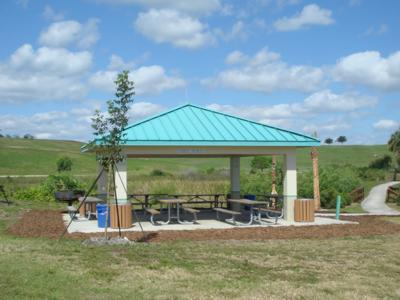 Davie LandfillThe Davie Landfill Superfund site is located in Broward County, Florida. A landfill operated on site from 1964 to 1987. The landfill accepted construction debris, tires and municipal wastes. In addition, a basin at the site received grease trap material, septic tank sludge and treated municipal sludge. Waste disposal activities led to the contamination of site soils, sediments and groundwater. EPA listed the site on the National Priorities List (NPL) in 1983. With EPA oversight, Broward County contained the cyanide- and sulfide-contaminated basin sediments, stabilizing the material in a disposal cell and capping the cell with a protective covering. Natural processes that break down contaminants are addressing the contamination in site groundwater. In 2006, EPA took the site off the NPL. The site’s remedy allows for a variety of recreational uses. About 160 acres of the 210-acre site are now part of Vista View Park, which opened in 2003. Park facilities include trails, picnic shelters, playgrounds, basketball courts, an equestrian corral, an airstrip for electric radio-controlled planes and glider pilots, fishing docks, and an area for camping. In 2010, EPA Region 4 recognized Broward County’s leadership with its Excellence in Site Reuse award.
Davie LandfillThe Davie Landfill Superfund site is located in Broward County, Florida. A landfill operated on site from 1964 to 1987. The landfill accepted construction debris, tires and municipal wastes. In addition, a basin at the site received grease trap material, septic tank sludge and treated municipal sludge. Waste disposal activities led to the contamination of site soils, sediments and groundwater. EPA listed the site on the National Priorities List (NPL) in 1983. With EPA oversight, Broward County contained the cyanide- and sulfide-contaminated basin sediments, stabilizing the material in a disposal cell and capping the cell with a protective covering. Natural processes that break down contaminants are addressing the contamination in site groundwater. In 2006, EPA took the site off the NPL. The site’s remedy allows for a variety of recreational uses. About 160 acres of the 210-acre site are now part of Vista View Park, which opened in 2003. Park facilities include trails, picnic shelters, playgrounds, basketball courts, an equestrian corral, an airstrip for electric radio-controlled planes and glider pilots, fishing docks, and an area for camping. In 2010, EPA Region 4 recognized Broward County’s leadership with its Excellence in Site Reuse award.
Last updated September 2019
As of December 2019, EPA had data on one on-site business. This business employed 17 people and generated an estimated $337,582 in annual sales revenue. For additional information click here.
For more information:
- Recreational and Ecological Use at Superfund Sites Story MapEXIT
- Sites in Reuse: Davie Landfill Superfund Site (PDF)(2 pp, 1.6 MB)
- Reuse and the Benefit to Community: Davie Landfill Superfund Site (PDF) (57 pp, 1.2 MB, About PDF)
- News Release: EPA Recognizes Broward County, Fl., for Transforming Former Landfill into a Park
- Superfund Site Profile Page
Florida Petroleum Reprocessors
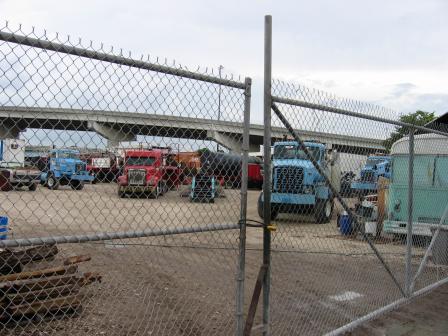 Florida Petroleum ReprocessorsThe Florida Petroleum Reprocessors (FPR) Superfund site is located in Davie, Florida. The site consists of the 1-acre facility property and a groundwater plume that covered about 870 acres. From 1979 to 1992, several companies operated at the FPR facility. Some recycled used motor oil and fuel. In 1996, EPA and the Florida Department of Environmental Protection identified contamination at a nearby municipal well field. The agencies traced the contamination back to the FPR facility. In response, EPA placed the site on the National Priorities List (NPL) in 1998. In 2001, cleanup removed contaminated source materials. In 2003, EPA approved a change to the groundwater cleanup approach. From 2003 to 2014, the group of potentially responsible parties used techniques to enhance the natural processes that break down contaminants in the groundwater plume. In 2014, EPA determined the cleanup project was complete. All infrastructure related to the former groundwater treatment system can now be removed. While cleanup was underway, a vehicle and equipment storage facility operated on the southern part of the site. A highway billboard is located on site.
Florida Petroleum ReprocessorsThe Florida Petroleum Reprocessors (FPR) Superfund site is located in Davie, Florida. The site consists of the 1-acre facility property and a groundwater plume that covered about 870 acres. From 1979 to 1992, several companies operated at the FPR facility. Some recycled used motor oil and fuel. In 1996, EPA and the Florida Department of Environmental Protection identified contamination at a nearby municipal well field. The agencies traced the contamination back to the FPR facility. In response, EPA placed the site on the National Priorities List (NPL) in 1998. In 2001, cleanup removed contaminated source materials. In 2003, EPA approved a change to the groundwater cleanup approach. From 2003 to 2014, the group of potentially responsible parties used techniques to enhance the natural processes that break down contaminants in the groundwater plume. In 2014, EPA determined the cleanup project was complete. All infrastructure related to the former groundwater treatment system can now be removed. While cleanup was underway, a vehicle and equipment storage facility operated on the southern part of the site. A highway billboard is located on site.
Last updated September 2019
As of December 2019, EPA did not have economic data related to on-site businesses, or economic data were not applicable due to site use. For additional information click here.
For more information:
Former Spellman Engineering 
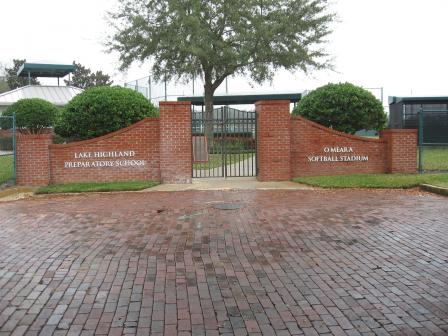 Former Spellman EngineeringThe Former Spellman Engineering site is located near downtown Orlando, Florida. Spellman Engineering, a former parts cleaning facility, operated at the site from 1963 to 1969. In 1992, EPA detected a groundwater contaminant plume extending beyond the property boundaries. The plume contained chemicals associated with the parts cleaning operations. The city of Orlando (the City) and Orlando Utility Commission (OUC) acquired much of the property prior to discovery of the plume. Under a lease agreement with an option to purchase, Lake Highland Preparatory School (LHPS) developed some of the land into a sports and recreation complex. The City signed the first contiguous property owner agreement (CPO) in the country and used the LHPS sale proceeds to help fund the site’s cleanup. This prevented the site’s listing on the National Priorities List (NPL). Burial of the site’s groundwater cleanup system allowed for remediation while optimizing reuse opportunities. The project provided benefits for all parties involved. For the City and OUC, the site’s cleanup protects public health, while the adjacent property’s redevelopment will provide new land uses to address community needs. For surrounding neighborhoods, the cleanup addresses local health and safety concerns, removes a community "eyesore," and results in the Lake Highland property’s redevelopment in a manner consistent with community goals and priorities. For LHPS, the site’s cleanup provides an adjacent land area for new and expanded school facilities. Today, the school’s O’Meara Family Sports Center includes a new ballfield, practice fields and parking. Future expansion plans call for a gymnasium and maintenance facilities. The Dinky Line segment of the Orlando Urban Trail, a paved recreation trail, now extends through the area. Commercial and industrial businesses are located on part of the site. The City and OUC are also exploring opportunities for mixed-use redevelopment near Central Florida’s new SunRail commuter rail line and other planned public transit facilities.
Former Spellman EngineeringThe Former Spellman Engineering site is located near downtown Orlando, Florida. Spellman Engineering, a former parts cleaning facility, operated at the site from 1963 to 1969. In 1992, EPA detected a groundwater contaminant plume extending beyond the property boundaries. The plume contained chemicals associated with the parts cleaning operations. The city of Orlando (the City) and Orlando Utility Commission (OUC) acquired much of the property prior to discovery of the plume. Under a lease agreement with an option to purchase, Lake Highland Preparatory School (LHPS) developed some of the land into a sports and recreation complex. The City signed the first contiguous property owner agreement (CPO) in the country and used the LHPS sale proceeds to help fund the site’s cleanup. This prevented the site’s listing on the National Priorities List (NPL). Burial of the site’s groundwater cleanup system allowed for remediation while optimizing reuse opportunities. The project provided benefits for all parties involved. For the City and OUC, the site’s cleanup protects public health, while the adjacent property’s redevelopment will provide new land uses to address community needs. For surrounding neighborhoods, the cleanup addresses local health and safety concerns, removes a community "eyesore," and results in the Lake Highland property’s redevelopment in a manner consistent with community goals and priorities. For LHPS, the site’s cleanup provides an adjacent land area for new and expanded school facilities. Today, the school’s O’Meara Family Sports Center includes a new ballfield, practice fields and parking. Future expansion plans call for a gymnasium and maintenance facilities. The Dinky Line segment of the Orlando Urban Trail, a paved recreation trail, now extends through the area. Commercial and industrial businesses are located on part of the site. The City and OUC are also exploring opportunities for mixed-use redevelopment near Central Florida’s new SunRail commuter rail line and other planned public transit facilities.
Last updated September 2019
As of December 2019, EPA had data on one on-site business. This business employed 10 people and generated an estimated $973,000 in annual sales revenue. For additional information click here.
For more information:
- Ready for Reuse: Downtown Orlando Commercial Property (PDF)(4 pg, 2.2 MB)
- Site Redevelopment Profile for the Former Spellman Engineering Site (PDF)(3 pp, 2.5 MB)
- Engaging Early in the Superfund Process, Enabling Cleanup and Reuse: The Former Spellman Engineering Site in Orlando, Florida (PDF) (14 pp, 1.9 MB)
- Superfund Site Profile Page
Harris Corp. (Palm Bay Plant)
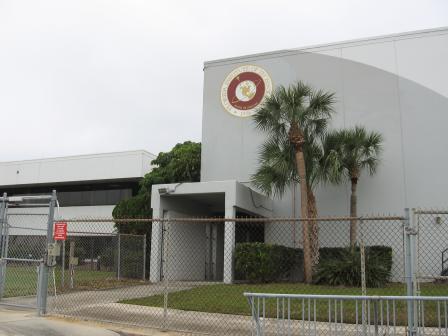 Harris Corp. (Palm Bay Plant)The 310-acre Harris Corp. (Palm Bay Plant) Superfund site is located in Palm Bay, Florida. The site was home to an electronics firm from the 1950s until Harris Corporation purchased the firm in 1967. Intersil Corporation bought the operations from Harris Corporation. Harris Corporation and a second company, Renesas, continue to make equipment on site. In the early 1980s, EPA discovered groundwater contamination under the facility and in a nearby well field. As a result, EPA placed the site on the National Priorities List (NPL) in 1987. The site’s potentially responsible party removed and treated contaminated groundwater. In 2002, groundwater treatment ended. Groundwater monitoring is ongoing. In 2010, Intersil Corporation donated a $13 million, state-of-the-art fabrication facility and a 5-acre property to the University of Central Florida as a research center. After the University decided against using the buildings, Intersil Corporation worked with EPA and the Florida Institute of Technology (FIT) to finalize FIT’s purchase of the facility and land. FIT now uses the area as an extended campus for students. In February 2015, Harris Corporation opened a 464,000-square-foot, $130 million technology center on site. The center’s construction created nearly 300 jobs for workers in the area. In the summer of 2016, Intersil Corporation sold part of its property for development of a convenience store and gas station. In 2017, Intersil was purchased by Renesas, which now operates Intersil’s former plant on site. Renesas also leases parts of its property to other companies.
Harris Corp. (Palm Bay Plant)The 310-acre Harris Corp. (Palm Bay Plant) Superfund site is located in Palm Bay, Florida. The site was home to an electronics firm from the 1950s until Harris Corporation purchased the firm in 1967. Intersil Corporation bought the operations from Harris Corporation. Harris Corporation and a second company, Renesas, continue to make equipment on site. In the early 1980s, EPA discovered groundwater contamination under the facility and in a nearby well field. As a result, EPA placed the site on the National Priorities List (NPL) in 1987. The site’s potentially responsible party removed and treated contaminated groundwater. In 2002, groundwater treatment ended. Groundwater monitoring is ongoing. In 2010, Intersil Corporation donated a $13 million, state-of-the-art fabrication facility and a 5-acre property to the University of Central Florida as a research center. After the University decided against using the buildings, Intersil Corporation worked with EPA and the Florida Institute of Technology (FIT) to finalize FIT’s purchase of the facility and land. FIT now uses the area as an extended campus for students. In February 2015, Harris Corporation opened a 464,000-square-foot, $130 million technology center on site. The center’s construction created nearly 300 jobs for workers in the area. In the summer of 2016, Intersil Corporation sold part of its property for development of a convenience store and gas station. In 2017, Intersil was purchased by Renesas, which now operates Intersil’s former plant on site. Renesas also leases parts of its property to other companies.
Last updated September 2019
As of December 2019, EPA had data on 28 on-site businesses. These businesses employed 5,234 people and generated an estimated $2,268,600,306 in annual sales revenue. For additional information click here.
For more information:
- Sites in Continued Use, Palm Bay Industrial Property (PDF)(1 pg, 482 K)
- Harris Corp. (Palm Bay Plant) Ready for Reuse Determination (2009) (PDF) (20 pp, 3.0 MBK, About PDF)
- Superfund Site Profile Page
Helena Chemical Co. (Tampa Plant)
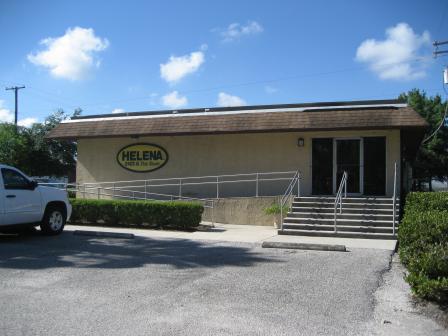 Helena Chemical Co. (Tampa Plant)The 8-acre Helena Chemical Co. (Tampa Plant) Superfund site is located in Tampa, Florida. Originally owned by the Flag Sulfur Company, the facility made chemical agricultural products from 1929 to 1967. Helena Chemical Company purchased the company and continued to process and handle chemical agricultural products. EPA investigated the site from 1988 to 1990. Studies found contamination in the soil and groundwater. In 1992, EPA added the site to the National Priorities List (NPL). Cleanup involved removing chemical storage tanks and treating soils. Groundwater also needed to be cleaned up to meet drinking water levels. Cleanup began in 2000 and is ongoing. The Helena Chemical Company remains on site. The company uses the facility as a distribution center.
Helena Chemical Co. (Tampa Plant)The 8-acre Helena Chemical Co. (Tampa Plant) Superfund site is located in Tampa, Florida. Originally owned by the Flag Sulfur Company, the facility made chemical agricultural products from 1929 to 1967. Helena Chemical Company purchased the company and continued to process and handle chemical agricultural products. EPA investigated the site from 1988 to 1990. Studies found contamination in the soil and groundwater. In 1992, EPA added the site to the National Priorities List (NPL). Cleanup involved removing chemical storage tanks and treating soils. Groundwater also needed to be cleaned up to meet drinking water levels. Cleanup began in 2000 and is ongoing. The Helena Chemical Company remains on site. The company uses the facility as a distribution center.
Last updated September 2019
As of December 2019, EPA had data on one on-site business. This business employed 20 people and generated an estimated $32,066,000 in annual sales revenue. For additional information click here.
For more information:
Jacksonville Ash Site 

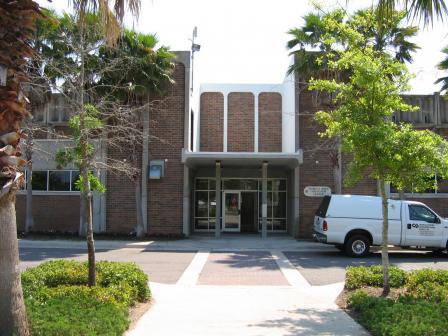 Jacksonville Ash SiteThe Jacksonville Ash Site Superfund site is located in Jacksonville, Florida. The site includes three areas where the city of Jacksonville’s (the City’s) municipal incinerators created and deposited ash. The Forest Street Incinerator covers about 370 acres. The 5th & Cleveland Incinerator covers about 520 acres. Lonnie C. Miller, Sr. Park covers about 250 acres. These areas are located in residential areas. The Forest Street Incinerator and the 5th & Cleveland Incinerator were the City’s municipal solid waste incinerators from the 1910s until the 1960s. Operators disposed of combustion ash, clinker and ash residues on the incinerator properties, as well as on the land later redeveloped into Lonnie C. Miller, Sr. Park. EPA did not list the site on the National Priorities List (NPL) but considers it an NPL-caliber site. EPA is addressing the site through the Superfund Alternative Approach. Cleanup efforts have included soil removal, surface covers and use restrictions to prevent contact with contaminated soils. Current land uses on site include residential, commercial, recreational and public service uses. All three sections of the site remained in use during cleanup. Facilities at Lonnie C. Miller, Sr. Park include playgrounds, picnic pavilions, restrooms, a sand volleyball court, walking paths and parking areas. The 5th Street and Cleveland Incinerator area is now home to the Emmet C. Reed Community Center, a pool and recreational facilities, including a basketball court, playground, the MaliVai Washington Tennis Center and parking. The Forest Street Incinerator area includes a park building, a ball field, parking, playground areas and an animal care facility. EPA Region 4 recognized the community’s leadership with its Excellence in Site Reuse award in December 2015. Future plans include additional park facilities.
Jacksonville Ash SiteThe Jacksonville Ash Site Superfund site is located in Jacksonville, Florida. The site includes three areas where the city of Jacksonville’s (the City’s) municipal incinerators created and deposited ash. The Forest Street Incinerator covers about 370 acres. The 5th & Cleveland Incinerator covers about 520 acres. Lonnie C. Miller, Sr. Park covers about 250 acres. These areas are located in residential areas. The Forest Street Incinerator and the 5th & Cleveland Incinerator were the City’s municipal solid waste incinerators from the 1910s until the 1960s. Operators disposed of combustion ash, clinker and ash residues on the incinerator properties, as well as on the land later redeveloped into Lonnie C. Miller, Sr. Park. EPA did not list the site on the National Priorities List (NPL) but considers it an NPL-caliber site. EPA is addressing the site through the Superfund Alternative Approach. Cleanup efforts have included soil removal, surface covers and use restrictions to prevent contact with contaminated soils. Current land uses on site include residential, commercial, recreational and public service uses. All three sections of the site remained in use during cleanup. Facilities at Lonnie C. Miller, Sr. Park include playgrounds, picnic pavilions, restrooms, a sand volleyball court, walking paths and parking areas. The 5th Street and Cleveland Incinerator area is now home to the Emmet C. Reed Community Center, a pool and recreational facilities, including a basketball court, playground, the MaliVai Washington Tennis Center and parking. The Forest Street Incinerator area includes a park building, a ball field, parking, playground areas and an animal care facility. EPA Region 4 recognized the community’s leadership with its Excellence in Site Reuse award in December 2015. Future plans include additional park facilities.
Last updated September 2019
As of December 2019, EPA had data on 5 on-site businesses. These businesses employed 45 people and generated an estimated $1,402,000 in annual sales revenue. For additional information click here.
For more information:
- Sites in Reuse: Jacksonville Ash and Brown's Dump Superfund Alternative Sites (PDF)(2 pp, 2.2 MB)
- Press Release: Excellence in Site Reuse Award
- Superfund Site Profile Page
JJ Seifert Machine
The 2-acre JJ Seifert Machine Superfund site is located in Ruskin, Florida. From 1962 to 2011, JJ Seifert Machine Company made electronic components on site. Facility operations resulted in soil and groundwater contamination. After EPA and the Florida Department of Environmental Protection (FDEP) investigated site conditions, FDEP installed filters on private wells where contaminants exceeded drinking water standards in 2009. EPA placed the site on the National Priorities List (NPL) in 2010. In 2014 and 2015, EPA excavated and disposed of 615 tons of contaminated soil. EPA also installed monitoring wells and injection wells for groundwater cleanup. Groundwater cleanup is ongoing. Today, several small commercial businesses operate on site.
Last updated September 2019
As of December 2019, EPA had data on 3 on-site businesses. These businesses employed 5 people and generated an estimated $1,544,000 in annual sales revenue. For additional information click here.
For more information:
Landia Chemical Company
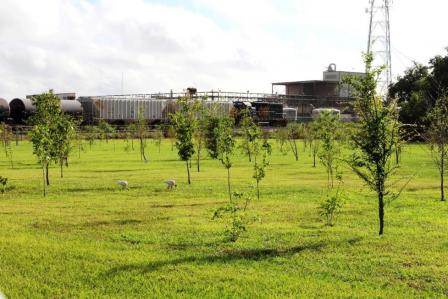 Landia Chemical CompanyThe 13-acre Landia Chemical Company Superfund site is located in Lakeland, Florida. The site spans two property parcels – the former Landia Chemical Company (LCC) property and the former Florida Favorite Fertilizer (FFF) Company. FFF began fertilizer blending operations around 1935. Between 1945 and 1987, three companies conducted industrial pesticide operations on the former LCC property. Over time, facility waste management and disposal activities released contaminants into the environment. EPA placed the site on the National Priorities List (NPL) in 2000. With oversight by EPA and the Florida Department of Environmental Protection, the responsible parties cleaned up the site. Cleanup included removal and disposal of contaminated soil as well as land and groundwater use restrictions. Groundwater treatment is ongoing. Responsible parties replanted vegetation at the site. Over 30 varieties of plants and trees now grow on site. These areas are in ecological reuse. They provide habitat for native wildlife, migratory birds and pollinators. The trees also help clean up groundwater through uptake and phytoremediation. The FFF facility is currently owned by Sylvite Southeast, a wholesale fertilizer merchant. The company continues to operate a fertilizer-blending facility on site. In 2013, EPA Region 4 recognized the site’s potentially responsible parties with its Excellence in Site Reuse Award, in recognition of their ecological revitalization efforts at the site.
Landia Chemical CompanyThe 13-acre Landia Chemical Company Superfund site is located in Lakeland, Florida. The site spans two property parcels – the former Landia Chemical Company (LCC) property and the former Florida Favorite Fertilizer (FFF) Company. FFF began fertilizer blending operations around 1935. Between 1945 and 1987, three companies conducted industrial pesticide operations on the former LCC property. Over time, facility waste management and disposal activities released contaminants into the environment. EPA placed the site on the National Priorities List (NPL) in 2000. With oversight by EPA and the Florida Department of Environmental Protection, the responsible parties cleaned up the site. Cleanup included removal and disposal of contaminated soil as well as land and groundwater use restrictions. Groundwater treatment is ongoing. Responsible parties replanted vegetation at the site. Over 30 varieties of plants and trees now grow on site. These areas are in ecological reuse. They provide habitat for native wildlife, migratory birds and pollinators. The trees also help clean up groundwater through uptake and phytoremediation. The FFF facility is currently owned by Sylvite Southeast, a wholesale fertilizer merchant. The company continues to operate a fertilizer-blending facility on site. In 2013, EPA Region 4 recognized the site’s potentially responsible parties with its Excellence in Site Reuse Award, in recognition of their ecological revitalization efforts at the site.
Last updated September 2019
As of December 2019, EPA had data on one on-site business. This business employed 29 people and generated an estimated $15,000,000 in annual sales revenue. For additional information click here.
For more information:
- Site Redevelopment Profile for the Landia Chemical Company Superfund Site (PDF)(2 pp, 1.2 MB)
- Sites in Reuse: Lakeland Industrial Property (PDF)(1 pg, 1.1 MB)
- Supporting the Health of Pollinators: Ecological Reuse and the Landia Chemical Company Superfund Site (PDF)(2 pp, 1.7 MB)
- Superfund Site Profile Page
Madison County Sanitary Landfill 

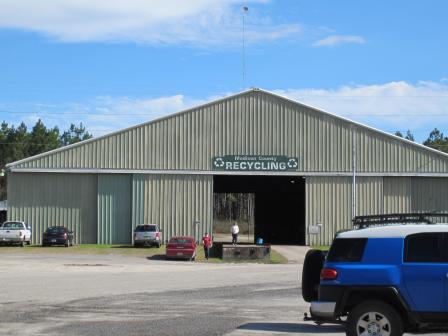 Madison County Sanitary LandfillThe 90-acre Madison County Sanitary Landfill Superfund site is located outside of Madison, Florida. From 1970 to 1980, the landfill accepted wastes, including industrial chemical cleaning products from the ITT Corporation. Sampling results in the mid-1980s found contamination in the groundwater. The Florida Department of Environmental Protection (FDEP) immediately installed water purification systems for residents living near the landfill. EPA added the site to the National Priorities List (NPL) in 1988. The city of Madison, Madison County and the ITT Corporation agreed to pay for and conduct the cleanup. Cleanup included installation of a soil cover and a water treatment system as well as land use restrictions and groundwater monitoring. Madison County currently uses the site for various municipal purposes. A recycling facility, storage for the Madison County Department of Transportation, an aircraft hangar and a landing strip are located on site.
Madison County Sanitary LandfillThe 90-acre Madison County Sanitary Landfill Superfund site is located outside of Madison, Florida. From 1970 to 1980, the landfill accepted wastes, including industrial chemical cleaning products from the ITT Corporation. Sampling results in the mid-1980s found contamination in the groundwater. The Florida Department of Environmental Protection (FDEP) immediately installed water purification systems for residents living near the landfill. EPA added the site to the National Priorities List (NPL) in 1988. The city of Madison, Madison County and the ITT Corporation agreed to pay for and conduct the cleanup. Cleanup included installation of a soil cover and a water treatment system as well as land use restrictions and groundwater monitoring. Madison County currently uses the site for various municipal purposes. A recycling facility, storage for the Madison County Department of Transportation, an aircraft hangar and a landing strip are located on site.
Last updated September 2019
As of December 2019, EPA had data on one on-site business. This business employed 30 people. For additional information click here.
For more information:
- Sites in Continued Use: Former Madison Industrial Property (PDF)(1 pg, 531 K)
- Superfund Site Profile Page
Miami Drum Services 

The 1.2-acre Miami Drum Services Superfund site is located in Miami, Florida. It includes the area where the Miami Drum Services company cleaned and recycled drums from 1966 to 1981. Once Miami Drum Services ceased operations, Dade County acquired the property for use as a maintenance facility and repair yard for its public rail lines. EPA placed the site on the National Priorities List (NPL) in 1983 due to contaminated soil and groundwater resulting from drum cleaning and recycling operations. Dade County teamed with EPA on a strategy to remove 15,000 tons of contaminated soil and treat over 650,000 gallons of contaminated groundwater. The successful cleanup enabled Dade County to finish construction of the William Lehman Operations and Maintenance Center, the County’s 82-acre train repair facility. Today, the facility ensures the safety, quality and timeliness of Dade County’s commuter trains, which serve 50,000 people each day.
Last updated September 2019
As of December 2019, EPA had data on one on-site business. EPA did not have further economic details related to this business. For additional information click here.
For more information:
Munisport Landfill
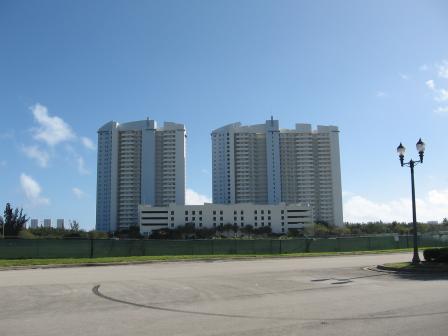 Munisport LandfillThe Munisport Landfill Superfund site is located in North Miami, Florida. A wetland mangrove preserve connected to Biscayne Bay borders the site. The 170-acre former landfill is part of a larger parcel of land originally planned for use as part of a trade and cultural center. The center’s developers received solid waste in the 1970s for use as fill material during construction. The developers disposed of 6 million cubic yards of solid waste in an unlined landfill. These disposal practices contaminated area groundwater and surface water. EPA placed the site on the National Priorities List (NPL) in 1983. Site investigations in the late 1980s showed that the landfill no longer threatened human health. However, additional cleanup was necessary in the mangrove wetlands. Workers installed a barrier to collect and treat groundwater and to prevent contaminants from spreading. Additional tidal wetland restoration activities followed. After cleanup, EPA took the site off the NPL in 1999. Beginning in 2002, developers worked toward creating a billion-dollar master-planned community on site known as Biscayne Landing. Construction on the mixed-use development stalled in 2007 due to the economic downturn. Today, completed development includes two 25-story towers of luxury condominiums. At full buildout, the master-planned community, now called SoLé Mia, will include commercial office and retail, residential, hotel and recreational land uses.
Munisport LandfillThe Munisport Landfill Superfund site is located in North Miami, Florida. A wetland mangrove preserve connected to Biscayne Bay borders the site. The 170-acre former landfill is part of a larger parcel of land originally planned for use as part of a trade and cultural center. The center’s developers received solid waste in the 1970s for use as fill material during construction. The developers disposed of 6 million cubic yards of solid waste in an unlined landfill. These disposal practices contaminated area groundwater and surface water. EPA placed the site on the National Priorities List (NPL) in 1983. Site investigations in the late 1980s showed that the landfill no longer threatened human health. However, additional cleanup was necessary in the mangrove wetlands. Workers installed a barrier to collect and treat groundwater and to prevent contaminants from spreading. Additional tidal wetland restoration activities followed. After cleanup, EPA took the site off the NPL in 1999. Beginning in 2002, developers worked toward creating a billion-dollar master-planned community on site known as Biscayne Landing. Construction on the mixed-use development stalled in 2007 due to the economic downturn. Today, completed development includes two 25-story towers of luxury condominiums. At full buildout, the master-planned community, now called SoLé Mia, will include commercial office and retail, residential, hotel and recreational land uses.
Last updated September 2019
As of December 2019, EPA had data on 48 on-site businesses. These businesses employed 196 people and generated an estimated $47,682,179 in annual sales revenue. For additional information click here.
For more information:
Nocatee Hull Creosote
The 75-acre Nocatee Hull Creosote site is located in Hull, Florida. From 1913 to 1952, a creosote treatment plant operated on site, treating railroad ties using high-temperature liquid creosote. Wood-treating wastes from the treatment plant contaminated soil, groundwater and sediment. In 1986, the Florida Department of Environmental Protection began investigations when contamination was identified in nearby private drinking water wells. EPA did not list the site on the National Priorities List (NPL) but considers it an NPL-caliber site. The potentially responsible party (PRP) completed cleanup of the site in December 2014. Cleanup consisted of excavation and containment of contaminated soils, groundwater treatment, installation of potable water lines for residents affected by groundwater contamination, fencing of the site to prevent unauthorized access, and wetland restoration. The PRP also planted native grasslands to provide a habitat for pollinators, planted native wetland plant species to prevent erosion and create wildlife habitat, and created an on-site irrigation source for the pollinator habitat. Monarch Watch certified the site as a Monarch Waystation. In 2016, the site received the Wildlife Habitat Council’s gold status certification and the Wildlife Habitat Council’s Award for Wetlands and Waterbodies.
Last updated September 2019
As of December 2019, EPA did not have economic data related to on-site businesses, or economic data were not applicable due to site use. For additional information click here.
For more information:
Normandy Park Apartments
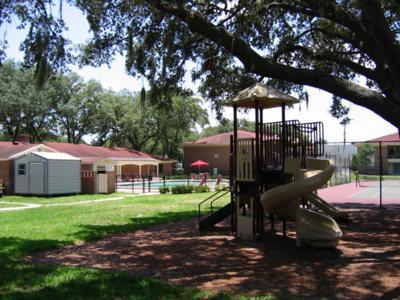 Normandy Park ApartmentsThe 9-acre Normandy Park Apartments Superfund site is located in Temple Terrace, Florida, near Tampa. From 1953 to 1963, Gulf Coast Recycling operated a battery recycling and secondary lead smelting facility on site. Facility operations resulted in the release of sulfuric acid and lead into the environment. The company built a 144-unit apartment complex on the property in 1970. EPA sampling in the early 1990s confirmed widespread lead and antimony contamination. EPA proposed placing the site on the National Priorities List (NPL) in 1995, but the listing was never finalized. In 2000, EPA’s cleanup included removal of the top 2 feet of exposed soil around the apartment complex and placement of clean soil and sod in all excavated areas. It also included soil treatment and monitoring of the natural breakdown of groundwater contaminants. Restrictions are in place to limit the future use of soil and groundwater. Envirofocus acquired Gulf Coast Recycling and is now responsible for operation and maintenance activities at the site. EPA and the Florida Department of Environmental Protection provide oversight. The apartment complex, The Park at Monument Terrace, includes a playground, an apartment clubhouse and a laundry facility. The northern courtyard consists of 80 residential units in eight buildings. The southern courtyard consists of 64 residential units in four buildings.
Normandy Park ApartmentsThe 9-acre Normandy Park Apartments Superfund site is located in Temple Terrace, Florida, near Tampa. From 1953 to 1963, Gulf Coast Recycling operated a battery recycling and secondary lead smelting facility on site. Facility operations resulted in the release of sulfuric acid and lead into the environment. The company built a 144-unit apartment complex on the property in 1970. EPA sampling in the early 1990s confirmed widespread lead and antimony contamination. EPA proposed placing the site on the National Priorities List (NPL) in 1995, but the listing was never finalized. In 2000, EPA’s cleanup included removal of the top 2 feet of exposed soil around the apartment complex and placement of clean soil and sod in all excavated areas. It also included soil treatment and monitoring of the natural breakdown of groundwater contaminants. Restrictions are in place to limit the future use of soil and groundwater. Envirofocus acquired Gulf Coast Recycling and is now responsible for operation and maintenance activities at the site. EPA and the Florida Department of Environmental Protection provide oversight. The apartment complex, The Park at Monument Terrace, includes a playground, an apartment clubhouse and a laundry facility. The northern courtyard consists of 80 residential units in eight buildings. The southern courtyard consists of 64 residential units in four buildings.
Last updated September 2019
As of December 2019, EPA had data on one on-site business. This business employed 2 people and generated an estimated $66,000 in annual sales revenue. For additional information click here.
For more information:
Northwest 58th Street Landfill 

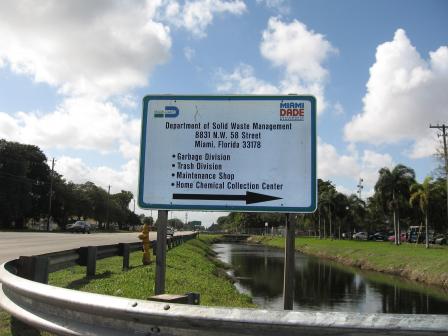 Northwest 58th Street LandfillThe 660-acre Northwest 58th Street Landfill Superfund site is located in Miami-Dade County, Florida. From 1952 to 1982, Miami-Dade County operated a municipal landfill at the site. The landfill accepted municipal and industrial wastes. Improper storage and burning of waste on site resulted in the contamination of groundwater. In 1983, EPA added the site to the National Priorities List (NPL). Cleanup included the connection of private well users affected by the landfill to the public water system and proper closure of the landfill. Ongoing activities at the site include stormwater management, passive methane and leachate control, and groundwater and methane gas monitoring. Miami-Dade County, the site’s potentially responsible party, led investigation and cleanup activities. EPA and the Florida Department of Environmental Protection provided cleanup oversight. Following cleanup, EPA took the site off the NPL in 1996. Although the site’s landfill area is fenced and closed to the public, with advanced notice Miami-Dade County allows school groups, birdwatchers and other visitors on site to view the wetland area and associated wildlife. Visitors can walk on a crushed-stone trail along the southern shore of the stormwater management and restored wetland area. The site is also a staging area for management of hurricane debris. The southern portion of the site has been developed for a variety of municipal uses. Dade County’s Mosquito Control Division, Solid Waste Management, Transit and Public Works, Internal Services, Fire and Public Safety Training Facilities, and South Florida Water Management District offices are located on site. Miami-Dade County is currently looking at potential reuse options for another part of the site. The County’s Park and Recreation Department is interested in developing a 15-field soccer complex on the southwest corner of the landfill. Additional future plans for the site include possible solar power generation.
Northwest 58th Street LandfillThe 660-acre Northwest 58th Street Landfill Superfund site is located in Miami-Dade County, Florida. From 1952 to 1982, Miami-Dade County operated a municipal landfill at the site. The landfill accepted municipal and industrial wastes. Improper storage and burning of waste on site resulted in the contamination of groundwater. In 1983, EPA added the site to the National Priorities List (NPL). Cleanup included the connection of private well users affected by the landfill to the public water system and proper closure of the landfill. Ongoing activities at the site include stormwater management, passive methane and leachate control, and groundwater and methane gas monitoring. Miami-Dade County, the site’s potentially responsible party, led investigation and cleanup activities. EPA and the Florida Department of Environmental Protection provided cleanup oversight. Following cleanup, EPA took the site off the NPL in 1996. Although the site’s landfill area is fenced and closed to the public, with advanced notice Miami-Dade County allows school groups, birdwatchers and other visitors on site to view the wetland area and associated wildlife. Visitors can walk on a crushed-stone trail along the southern shore of the stormwater management and restored wetland area. The site is also a staging area for management of hurricane debris. The southern portion of the site has been developed for a variety of municipal uses. Dade County’s Mosquito Control Division, Solid Waste Management, Transit and Public Works, Internal Services, Fire and Public Safety Training Facilities, and South Florida Water Management District offices are located on site. Miami-Dade County is currently looking at potential reuse options for another part of the site. The County’s Park and Recreation Department is interested in developing a 15-field soccer complex on the southwest corner of the landfill. Additional future plans for the site include possible solar power generation.
Last updated September 2019
As of December 2019, EPA had data on 8 on-site businesses. These businesses employed 725 people and generated an estimated $41,511,000 in annual sales revenue. For additional information click here.
For more information:
Parramore Surplus
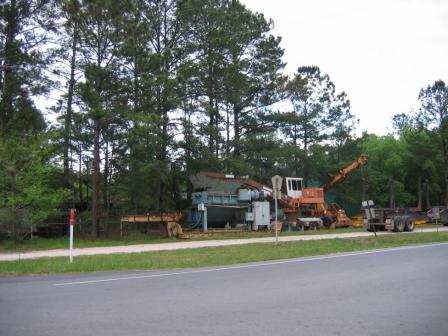 Parramore SurplusThe 25-acre Parramore Surplus Company Superfund site is located in Mount Pleasant, Florida. A storage and resale company for surplus U.S. Navy and Air Force equipment is active on site. In the early 1970s, Parramore Surplus began purchasing products from naval and air force bases. These products included paint residues, waste oil, alcohols and degreasers. In 1982, the Florida Department of Environmental Regulation inspected the site and found hundreds of drums, some of which had leaked, killing vegetation. EPA placed the site on the National Priorities List (NPL) in 1983. EPA developed a plan to clean up the site. The potentially responsible party financed the cleanup, which included removing drums and contaminated soil as well as treating and monitoring groundwater. EPA took the site off the NPL in 1989. The design of EPA’s cleanup plan enabled the surplus company to remain open for business, retaining jobs and income in the community as well as maintaining a safe working environment.
Parramore SurplusThe 25-acre Parramore Surplus Company Superfund site is located in Mount Pleasant, Florida. A storage and resale company for surplus U.S. Navy and Air Force equipment is active on site. In the early 1970s, Parramore Surplus began purchasing products from naval and air force bases. These products included paint residues, waste oil, alcohols and degreasers. In 1982, the Florida Department of Environmental Regulation inspected the site and found hundreds of drums, some of which had leaked, killing vegetation. EPA placed the site on the National Priorities List (NPL) in 1983. EPA developed a plan to clean up the site. The potentially responsible party financed the cleanup, which included removing drums and contaminated soil as well as treating and monitoring groundwater. EPA took the site off the NPL in 1989. The design of EPA’s cleanup plan enabled the surplus company to remain open for business, retaining jobs and income in the community as well as maintaining a safe working environment.
Last updated September 2019
As of December 2019, EPA had data on one on-site business. This business employed one person and generated an estimated $75,000 in annual sales revenue. For additional information click here.
For more information:
Pepper Steel & Alloys, Inc. 
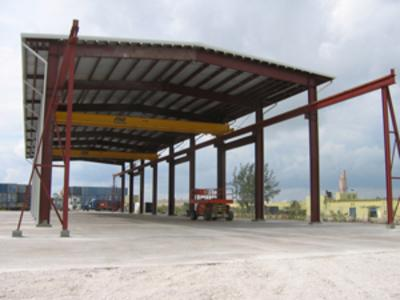 Pepper Steel & Alloys, Inc.The 25-acre Pepper Steel and Alloys, Inc. Superfund site is located near Medley, Florida, northwest of Miami. From the mid-1960s to the mid-1980s, several industrial businesses operated at the site. These businesses included manufacturers, equipment repair shops and a recycler. The firms disposed of trash and waste products on site, including rusted machinery and vehicles, tanks and batteries. The last business closed by the mid-1980s, leaving the vacant site as an attractive area for illegal dumping. The improper disposal practices contaminated site soil and groundwater. In 1983, EPA added the site to the National Priorities List (NPL). With EPA and Florida Department of Environmental Protection oversight, the site’s potentially responsible parties led site investigations and cleanup. Cleanup activities included removal and disposal of waste and debris as well as collection, treatment, solidification and capped storage of contaminated soils. The capped area containing the treated and solidified soil covers 11 acres. In 2005, a trucking company purchased the 5-acre southern parcel of the site for use as a commercial truck storage area. A developer purchased this parcel in 2018. The current development plan includes a commercial truck parking facility. A heavy machinery parts company uses the eastern part of the middle parcel. A small business owner purchased the 10-acre northern parcel in 2016 for development of a custom boat manufacturing and sales location. Development of this parcel will be completed in 2019.
Pepper Steel & Alloys, Inc.The 25-acre Pepper Steel and Alloys, Inc. Superfund site is located near Medley, Florida, northwest of Miami. From the mid-1960s to the mid-1980s, several industrial businesses operated at the site. These businesses included manufacturers, equipment repair shops and a recycler. The firms disposed of trash and waste products on site, including rusted machinery and vehicles, tanks and batteries. The last business closed by the mid-1980s, leaving the vacant site as an attractive area for illegal dumping. The improper disposal practices contaminated site soil and groundwater. In 1983, EPA added the site to the National Priorities List (NPL). With EPA and Florida Department of Environmental Protection oversight, the site’s potentially responsible parties led site investigations and cleanup. Cleanup activities included removal and disposal of waste and debris as well as collection, treatment, solidification and capped storage of contaminated soils. The capped area containing the treated and solidified soil covers 11 acres. In 2005, a trucking company purchased the 5-acre southern parcel of the site for use as a commercial truck storage area. A developer purchased this parcel in 2018. The current development plan includes a commercial truck parking facility. A heavy machinery parts company uses the eastern part of the middle parcel. A small business owner purchased the 10-acre northern parcel in 2016 for development of a custom boat manufacturing and sales location. Development of this parcel will be completed in 2019.
Last updated September 2019
As of December 2019, EPA had data on 3 on-site businesses. These businesses generated an estimated $246,000 in annual sales revenue. For additional information click here.
For more information:
- From Abandoned Land to New Life as a Commercial and Light Industrial Hub: The Pepper Steel & Alloys, Inc. Site in Medley, Florida (PDF)(9 pp, 2.5 MB)
- Redevelopment of the Pepper Steel & Alloys Superfund Site (PDF)(1 pg, 76 K, About PDF)
- Superfund Site Profile Page
Petroleum Products Corp.
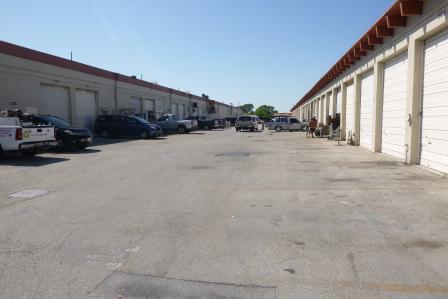 Petroleum Products Corp.The Petroleum Products Corp. Superfund site occupies 5 acres in Pembroke Park, Florida. Petroleum Products Corporation operated a used oil refining facility at the site from 1957 to 1971. Improper waste handling practices and oil spills resulted in the contamination of soil and groundwater. EPA added the site to the National Priorities List (NPL) in 1987. Cleanup activities focused on waste oil recovery. EPA is conducting investigations to address remaining soil and groundwater contamination. The site is located in a commercial and industrial area. Pembroke Park Warehouses, a 400-unit storage facility, remains in continued use at the site. The facility includes storage units, commercial businesses, including a gun range, and light industrial businesses. A restaurant is also located on site.
Petroleum Products Corp.The Petroleum Products Corp. Superfund site occupies 5 acres in Pembroke Park, Florida. Petroleum Products Corporation operated a used oil refining facility at the site from 1957 to 1971. Improper waste handling practices and oil spills resulted in the contamination of soil and groundwater. EPA added the site to the National Priorities List (NPL) in 1987. Cleanup activities focused on waste oil recovery. EPA is conducting investigations to address remaining soil and groundwater contamination. The site is located in a commercial and industrial area. Pembroke Park Warehouses, a 400-unit storage facility, remains in continued use at the site. The facility includes storage units, commercial businesses, including a gun range, and light industrial businesses. A restaurant is also located on site.
Last updated September 2019
As of December 2019, EPA had data on 51 on-site businesses. These businesses employed 163 people and generated an estimated $39,795,414 in annual sales revenue. For additional information click here.
For more information:
- Sites in Continued Use: Pembroke Commercial/Light Industrial Property (PDF)(1 pg, 485 K)
- Superfund Site Profile Page
Piper Aircraft Corp./Vero Beach Water & Sewer Department
The 80-acre Piper Aircraft Corp./Vero Beach Water & Sewer Department Superfund site is located in Vero Beach, Florida. An active manufacturing facility for small commuter and business planes is located on site. The facility began making airplanes in 1975. Soil and groundwater contamination resulted from a leaking underground storage tank that stored chemicals used in the company’s manufacturing process. To address the contamination, Piper Aircraft installed a groundwater pump-and-treat system in 1981. EPA placed the site on the National Priorities List (NPL) in 1990. With EPA and Florida Department of Environmental Protection oversight, Piper Aircraft, the site’s potentially responsible party, leads site cleanup activities. A new groundwater extraction and treatment system began operating in 1998. When contaminant levels dropped below Florida Natural Attenuation Default Concentration levels in 2017, Piper Aircraft decommissioned the groundwater treatment system. Groundwater monitoring will continue until cleanup levels have been achieved. Piper Aircraft continues to operate its facility on site. Several airport support businesses are also located on site.
Last updated September 2019
As of December 2019, EPA had data on 5 on-site businesses. These businesses employed 912 people and generated an estimated $231,279,000 in annual sales revenue. For additional information click here.
For more information:
- Sites in Continued Use: Vero Beach Industrial Property (PDF) (1 pg, 1.6 MB)
- Superfund Site Profile Page
Raleigh Street Dump 
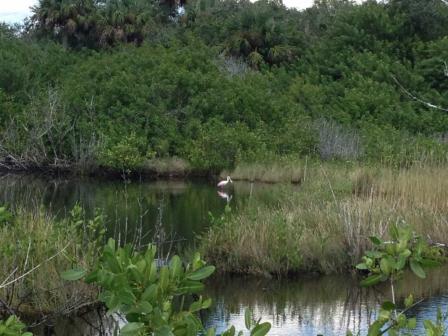 Raleigh Street DumpThe 10-acre Raleigh Street Dump Superfund site is located in Tampa, Florida. Various parties dumped wastes such as battery casings, furnace slag, as well as trash and construction debris on site from 1977 to 1991. In 1988, the Hillsborough County Environmental Protection Commission received complaints that Tampa Fiberglass improperly disposed of waste at the site. EPA added the site to the National Priorities List (NPL) in 2009. Cleanup activities included the removal and disposal of contaminated soils, addition of clean soils, planting of grass seed, wetlands restoration, groundwater monitoring and limits on future site uses. Fiberglass production is ongoing on the southern portion of the site. Potentially responsible parties (PRPs) expanded the previously existing wetlands habitat, creating a wildflower and native grass meadow on the upland area. PRPs installed nesting boxes for small birds and created habitat brush piles. PRPs also installed a bat box to provide habitat to native Florida bats and planted two milkweed gardens to provide habitat for Monarch butterflies. At the 2015 Wildlife Habitat Council’s annual conservation conference, a PRP contractor accepted the “Rookie of the Year” award for ecological restoration efforts at the site on behalf of the PRPs. EPA also recognized the PRPs with its 2016 Excellence in Reuse award.
Raleigh Street DumpThe 10-acre Raleigh Street Dump Superfund site is located in Tampa, Florida. Various parties dumped wastes such as battery casings, furnace slag, as well as trash and construction debris on site from 1977 to 1991. In 1988, the Hillsborough County Environmental Protection Commission received complaints that Tampa Fiberglass improperly disposed of waste at the site. EPA added the site to the National Priorities List (NPL) in 2009. Cleanup activities included the removal and disposal of contaminated soils, addition of clean soils, planting of grass seed, wetlands restoration, groundwater monitoring and limits on future site uses. Fiberglass production is ongoing on the southern portion of the site. Potentially responsible parties (PRPs) expanded the previously existing wetlands habitat, creating a wildflower and native grass meadow on the upland area. PRPs installed nesting boxes for small birds and created habitat brush piles. PRPs also installed a bat box to provide habitat to native Florida bats and planted two milkweed gardens to provide habitat for Monarch butterflies. At the 2015 Wildlife Habitat Council’s annual conservation conference, a PRP contractor accepted the “Rookie of the Year” award for ecological restoration efforts at the site on behalf of the PRPs. EPA also recognized the PRPs with its 2016 Excellence in Reuse award.
Last updated September 2019
As of December 2019, EPA had data on one on-site business. This business employed 3 people and generated an estimated $479,000 in annual sales revenue. For additional information click here.
For more information:
- Site Redevelopment Profile for the Raleigh Street Dump Superfund Site (PDF)(3 pp, 2.8 MB)
- CSX/ALI to Receive EPA's "Excellence in Site Re-Use"Award
- Superfund Site Profile Page
Reeves Southeastern Galvanizing Corp.
 Reeves Southeastern Galvanizing Corp.The Reeves Southeastern Galvanizing Corp. Superfund site is located in Tampa, Florida. The site includes the 17-acre Reeves Southeastern Galvanizing facility and the 11-acre Reeves Southeastern Wire facility. Beginning in the 1960s, the Reeves facilities disposed of wastes in ponds on site. This resulted in contamination of soil, sediment and groundwater. EPA placed the site on the National Priorities List (NPL) in 1983. Cleanup activities included removal, treatment and disposal of soil and sediment, and a well survey. In 2014, EPA revised the groundwater remedy from monitored natural attenuation to in-place, chemically-induced precipitation. Monitoring of groundwater and area water bodies is ongoing. Most of the site has remained in continued use during cleanup. In March 1996, Industrial Galvanizers of America (IGA) leased a 10-acre portion of the property. Since that time, IGA and subsequent owner Valmont have continued to operate a galvanizing facility on site. In April 2001, Master-Halco purchased Reeves Southeastern Corporation's Southeastern Wire Division. The company has continued to operate a wire-fencing manufacturing facility on the Reeves Southeastern Wire property. Electronic Entry Distributers and HIAB Inc. also operate on the site.
Reeves Southeastern Galvanizing Corp.The Reeves Southeastern Galvanizing Corp. Superfund site is located in Tampa, Florida. The site includes the 17-acre Reeves Southeastern Galvanizing facility and the 11-acre Reeves Southeastern Wire facility. Beginning in the 1960s, the Reeves facilities disposed of wastes in ponds on site. This resulted in contamination of soil, sediment and groundwater. EPA placed the site on the National Priorities List (NPL) in 1983. Cleanup activities included removal, treatment and disposal of soil and sediment, and a well survey. In 2014, EPA revised the groundwater remedy from monitored natural attenuation to in-place, chemically-induced precipitation. Monitoring of groundwater and area water bodies is ongoing. Most of the site has remained in continued use during cleanup. In March 1996, Industrial Galvanizers of America (IGA) leased a 10-acre portion of the property. Since that time, IGA and subsequent owner Valmont have continued to operate a galvanizing facility on site. In April 2001, Master-Halco purchased Reeves Southeastern Corporation's Southeastern Wire Division. The company has continued to operate a wire-fencing manufacturing facility on the Reeves Southeastern Wire property. Electronic Entry Distributers and HIAB Inc. also operate on the site.
Last updated September 2019
As of December 2019, EPA had data on 6 on-site businesses. These businesses employed 162 people and generated an estimated $56,540,476 in annual sales revenue. For additional information click here.
For more information:
Sanford Dry Cleaners
The Sanford Dry Cleaners Superfund site is located in Sanford, Florida. From the 1940s to 2001, a laundry and dry-cleaning facility operated on site. EPA placed the site on the National Priorities List (NPL) in 2010. The approximately 1-acre site includes two adjacent properties with three vacant buildings. EPA has completed cleanup activities at the site. Cleanup included excavation and disposal of contaminated soil and treatment of contaminated groundwater using bioremediation. The local government auctioned the three site properties for commercial redevelopment. A restaurant operates on two parcels and building renovations for commercial use are underway at the third parcel.
Last updated September 2019
As of December 2019, EPA had data on one on-site business. EPA did not have further economic details related to this business. For additional information click here.
For more information:
Sapp Battery Salvage
The 45-acre Sapp Battery Salvage Superfund site is a former battery recycling facility that operated from the early 1970s until 1980. The site is located in Jackson County, Florida. Waste disposal at the site contaminated the groundwater, soil and surrounding wetlands. In 1980, the Sapp Battery Company closed and left the facility. In August 1982, EPA placed the site on the National Priorities List (NPL). EPA’s cleanup included the removal and treatment of contaminated soil, sediments and contaminated groundwater. Cleanup is currently underway. The Sapp Battery Group, the site’s potentially responsible party, and EPA led investigation and cleanup activities in cooperation with the Florida Department of Environmental Protection. The area is being reused as pastureland; cows, horses and ponies graze on site. Wetlands and ponds provide 30 acres of wildlife habitat.
Last updated September 2019
As of December 2019, EPA did not have economic data related to on-site businesses, or economic data were not applicable due to site use. For additional information click here.
For more information:
Schuylkill Metals Corp.
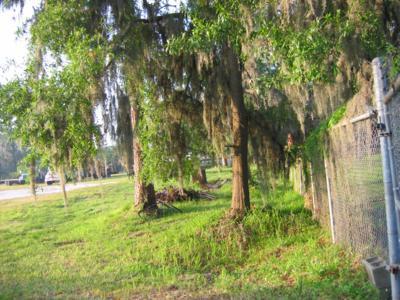 Schuylkill Metals Corp.The 17.4-acre Schuylkill Metals Corp. Superfund site is located in Plant City, Florida. A battery recycling facility operated on site from 1972 to 1986. Improper waste management resulted in contamination of site soil, sediment, surface water and groundwater. EPA placed the site on the National Priorities List (NPL) in 1983. In June 1986, the facility closed. EPA’s 1990 cleanup plan included addressing contaminated soil, groundwater and on-site marshes. Cleanup activities included burying contaminated soils and sediment, then covering them with clean soil and plants. Today, cleanup activities are complete. EPA took the site off the NPL in 2001. The potentially responsible parties removed contamination from the site’s wetlands and replanted areas with native vegetation. The successful cleanup and restoration of the site created 11 acres of wildlife habitat. The Florida Department of Environmental Protection oversees protection of the wetlands.
Schuylkill Metals Corp.The 17.4-acre Schuylkill Metals Corp. Superfund site is located in Plant City, Florida. A battery recycling facility operated on site from 1972 to 1986. Improper waste management resulted in contamination of site soil, sediment, surface water and groundwater. EPA placed the site on the National Priorities List (NPL) in 1983. In June 1986, the facility closed. EPA’s 1990 cleanup plan included addressing contaminated soil, groundwater and on-site marshes. Cleanup activities included burying contaminated soils and sediment, then covering them with clean soil and plants. Today, cleanup activities are complete. EPA took the site off the NPL in 2001. The potentially responsible parties removed contamination from the site’s wetlands and replanted areas with native vegetation. The successful cleanup and restoration of the site created 11 acres of wildlife habitat. The Florida Department of Environmental Protection oversees protection of the wetlands.
Last updated September 2019
As of December 2019, EPA did not have economic data related to on-site businesses, or economic data were not applicable due to site use. For additional information click here.
For more information:
- Sites in Reuse, Hillsborough County Industrial Property (PDF)(1 pg, 865 K)
- Superfund Site Profile Page
Sherwood Medical Industries
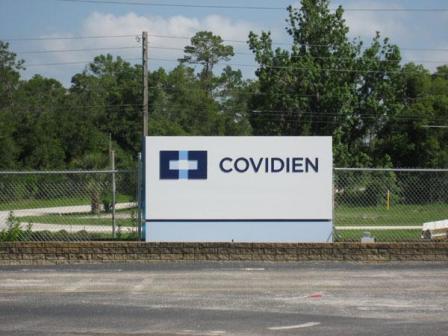 Sherwood Medical IndustriesThe 43-acre Sherwood Medical Industries Superfund site is located in DeLand, Florida. Sherwood Medical Industries made medical supplies on site beginning in 1959. The company disposed of liquid and sludge wastes into tanks and ponds, contaminating soil and groundwater. EPA placed the site on the National Priorities List (NPL) in 1983. Ongoing cleanup activities include collection, treatment and monitoring of groundwater as well as surface water and sediment sampling. The site owner also tests residential wells and enforces land use restrictions. Access to Miller Lake, which is partially located on the site property, is also restricted. The cleanup plan has allowed for the continued use of the site during cleanup. Cardinal Health currently makes medical supplies at the site. Remedy optimization is underway to speed up site cleanup.
Sherwood Medical IndustriesThe 43-acre Sherwood Medical Industries Superfund site is located in DeLand, Florida. Sherwood Medical Industries made medical supplies on site beginning in 1959. The company disposed of liquid and sludge wastes into tanks and ponds, contaminating soil and groundwater. EPA placed the site on the National Priorities List (NPL) in 1983. Ongoing cleanup activities include collection, treatment and monitoring of groundwater as well as surface water and sediment sampling. The site owner also tests residential wells and enforces land use restrictions. Access to Miller Lake, which is partially located on the site property, is also restricted. The cleanup plan has allowed for the continued use of the site during cleanup. Cardinal Health currently makes medical supplies at the site. Remedy optimization is underway to speed up site cleanup.
Last updated September 2019
As of December 2019, EPA had data on one on-site business. This business employed 900 people and generated an estimated $1,044,367,000 in annual sales revenue. For additional information click here.
For more information:
Solitron Devices Inc.
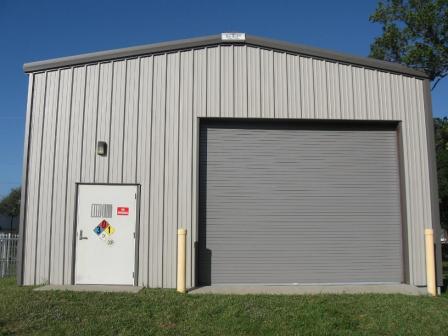 Solitron Devices Inc.The 8-acre Solitron Devices, Inc. Superfund site is located in Riviera Beach, Florida. In 1959, Honeywell built a facility at the site and began making electronic components for the defense and space industries. In 1965, Solitron Devices assumed ownership of the property. The company continued similar operations and expanded the facility. Honeywell and Solitron Devices both used heavy metals and organic solvents during facility operations. The facility’s industrial wastewater discharged to the city of Riviera Beach’s sewer system. In 1985, a state study found that solvents from the site had contaminated municipal supply wells in the city’s public well field. The study found groundwater contamination and a small area of metals-contaminated soil. In 2004, EPA selected the cleanup plan for the site. It included soil excavation and disposal and groundwater pumping and treatment. It also included the injection of treated water into the ground with added oxygen to enhance the natural breakdown of contaminants. The site’s remaining facilities – a warehouse, parking lot and paved entrance road – lay idle after former site owner Solitron Devices filed for bankruptcy in 1992. In 1999, EPA entered into a prospective purchaser agreement with the National Land Company (NLC) for the northern, 4-acre part of the site property. NLC purchased the area in 2000. NLC renovated it for commercial and light industrial land uses, including warehousing, light manufacturing and storage. In 2008, All Air Conditioned Self Storage purchased the area. It currently operates a self-storage facility on site. FedEx and several other businesses lease the building on the southern part of the site.
Solitron Devices Inc.The 8-acre Solitron Devices, Inc. Superfund site is located in Riviera Beach, Florida. In 1959, Honeywell built a facility at the site and began making electronic components for the defense and space industries. In 1965, Solitron Devices assumed ownership of the property. The company continued similar operations and expanded the facility. Honeywell and Solitron Devices both used heavy metals and organic solvents during facility operations. The facility’s industrial wastewater discharged to the city of Riviera Beach’s sewer system. In 1985, a state study found that solvents from the site had contaminated municipal supply wells in the city’s public well field. The study found groundwater contamination and a small area of metals-contaminated soil. In 2004, EPA selected the cleanup plan for the site. It included soil excavation and disposal and groundwater pumping and treatment. It also included the injection of treated water into the ground with added oxygen to enhance the natural breakdown of contaminants. The site’s remaining facilities – a warehouse, parking lot and paved entrance road – lay idle after former site owner Solitron Devices filed for bankruptcy in 1992. In 1999, EPA entered into a prospective purchaser agreement with the National Land Company (NLC) for the northern, 4-acre part of the site property. NLC purchased the area in 2000. NLC renovated it for commercial and light industrial land uses, including warehousing, light manufacturing and storage. In 2008, All Air Conditioned Self Storage purchased the area. It currently operates a self-storage facility on site. FedEx and several other businesses lease the building on the southern part of the site.
Last updated September 2019
As of December 2019, EPA had data on 5 on-site businesses. These businesses employed 61 people and generated an estimated $20,890,000 in annual sales revenue. For additional information click here.
For more information:
- Sites in Reuse: Solitron Devices Superfund Alternative Site (PDF)(2 pp, 660 K)
- Superfund Site Profile Page
Solitron Microwave
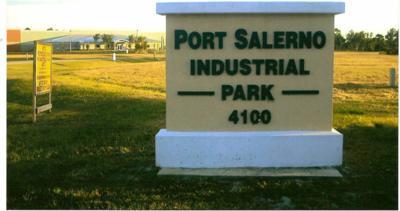 Solitron MicrowaveThe 20-acre Solitron Microwave Superfund site is located in Port Salerno, Florida. Metal plating and microwave manufacturing businesses operated on site from 1963 to 1987. Manufacturers made materials for the military, aerospace and microwave industries. Operations and leaking pipes and drum pads contaminated soil and groundwater. EPA placed the site on the National Priorities List (NPL) in 1998. Cleanup included soil removal, groundwater treatment and extension of the public water supply to affected residents. Cleanup activities started in 2000 and finished in 2004. Monitoring of the natural breakdown of contaminants in groundwater is ongoing. EPA provided safety and liability information to local officials and prospective purchasers to promote reuse. Portions of the site are reserved for wetlands and a native plant habitat reserve. Port Salerno Industrial Park (PSIP) purchased the site property in 2003. PSIP coordinated with EPA during construction of an industrial park for warehouse, office space and commercial facilities. The industrial park consists of seven lots with a paved roadway. A web printing services business began operating on site in 2006. An HVAC contractor currently operates on site. A land development company purchased a lot in 2010 and built a warehouse for its operations. The company also purchased an additional lot in 2013 with plans to expand parking and other facilities. As of 2019, all available lots have been purchased. EPA Region 4 presented PSIP with its Excellence in Site Reuse award in recognition of its leadership and redevelopment efforts.
Solitron MicrowaveThe 20-acre Solitron Microwave Superfund site is located in Port Salerno, Florida. Metal plating and microwave manufacturing businesses operated on site from 1963 to 1987. Manufacturers made materials for the military, aerospace and microwave industries. Operations and leaking pipes and drum pads contaminated soil and groundwater. EPA placed the site on the National Priorities List (NPL) in 1998. Cleanup included soil removal, groundwater treatment and extension of the public water supply to affected residents. Cleanup activities started in 2000 and finished in 2004. Monitoring of the natural breakdown of contaminants in groundwater is ongoing. EPA provided safety and liability information to local officials and prospective purchasers to promote reuse. Portions of the site are reserved for wetlands and a native plant habitat reserve. Port Salerno Industrial Park (PSIP) purchased the site property in 2003. PSIP coordinated with EPA during construction of an industrial park for warehouse, office space and commercial facilities. The industrial park consists of seven lots with a paved roadway. A web printing services business began operating on site in 2006. An HVAC contractor currently operates on site. A land development company purchased a lot in 2010 and built a warehouse for its operations. The company also purchased an additional lot in 2013 with plans to expand parking and other facilities. As of 2019, all available lots have been purchased. EPA Region 4 presented PSIP with its Excellence in Site Reuse award in recognition of its leadership and redevelopment efforts.
Last updated September 2019
As of December 2019, EPA had data on 2 on-site businesses. These businesses employed 46 people and generated an estimated $8,223,000 in annual sales revenue. For additional information click here.
For more information:
- Sites in Reuse: Solitron Microwave Superfund Site (PDF)(2 pp, 1 MB)
- Reuse and the Benefit to Community: Solitron Microwave Superfund Site (PDF) (7 pp, 607 K, About PDF)
- Port Salerno Industrial Park Excellence in Site Reuse Award
- Superfund Site Profile Page
Southern Solvents, Inc.
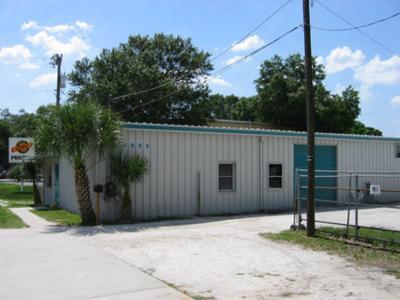 Southern Solvents, Inc.The 1-acre Southern Solvents, Inc. Superfund site is located in Tampa, Florida. A dry-cleaning solvents facility operated on site from the late 1970s to 1989. Spills from storage tanks on site contaminated soil and groundwater. EPA placed the site on the National Priorities List (NPL) in 2000. Cleanup included soil and groundwater treatment. Groundwater use restrictions are in place. A commercial painting business has operated on site since 1998. EPA worked with the company to make sure cleanup activities did not impact its operations. They also worked together to address potential liability concerns. In 2002, EPA entered into a prospective purchaser agreement with the painting company. The company then purchased the site property.
Southern Solvents, Inc.The 1-acre Southern Solvents, Inc. Superfund site is located in Tampa, Florida. A dry-cleaning solvents facility operated on site from the late 1970s to 1989. Spills from storage tanks on site contaminated soil and groundwater. EPA placed the site on the National Priorities List (NPL) in 2000. Cleanup included soil and groundwater treatment. Groundwater use restrictions are in place. A commercial painting business has operated on site since 1998. EPA worked with the company to make sure cleanup activities did not impact its operations. They also worked together to address potential liability concerns. In 2002, EPA entered into a prospective purchaser agreement with the painting company. The company then purchased the site property.
Last updated September 2019
As of December 2019, EPA had data on one on-site business. This business employed 20 people and generated an estimated $1,400,000 in annual sales revenue. For additional information click here.
For more information:
- Sites in Continued Use: Southern Solvents Superfund Site (PDF) (2 pp, 1.5 MB)
- Superfund Site Profile Page
Standard Auto Bumper Corp. 
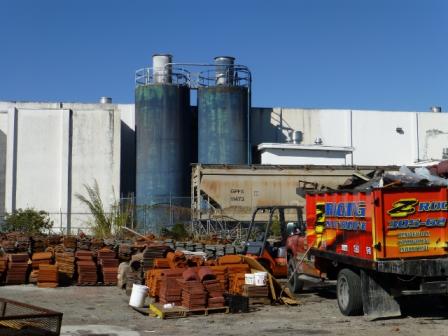 Standard Auto Bumper Corp.The 7-acre Standard Auto Bumper Corp. Superfund site is located in Hialeah, Florida. Standard Auto Bumper Corporation operated a plating facility on site from 1959 to 1992. Operators initially discharged wastewater into a ditch behind the facility. Operators later treated wastewater and discharged it to a percolation pit. These waste disposal practices led to soil and groundwater contamination. EPA placed the site on the National Priorities List (NPL) in 1989. In 1992, EPA selected a cleanup plan that included the removal and disposal of contaminated soil, groundwater monitoring and groundwater use controls. After cleanup, EPA took the site off the NPL in 2007. Today, businesses on site provide truck parking, concrete fencing and roofing services. A bakery and two furniture companies are located on an area that became part of the site after EPA expanded its original boundary.
Standard Auto Bumper Corp.The 7-acre Standard Auto Bumper Corp. Superfund site is located in Hialeah, Florida. Standard Auto Bumper Corporation operated a plating facility on site from 1959 to 1992. Operators initially discharged wastewater into a ditch behind the facility. Operators later treated wastewater and discharged it to a percolation pit. These waste disposal practices led to soil and groundwater contamination. EPA placed the site on the National Priorities List (NPL) in 1989. In 1992, EPA selected a cleanup plan that included the removal and disposal of contaminated soil, groundwater monitoring and groundwater use controls. After cleanup, EPA took the site off the NPL in 2007. Today, businesses on site provide truck parking, concrete fencing and roofing services. A bakery and two furniture companies are located on an area that became part of the site after EPA expanded its original boundary.
Last updated September 2019
As of December 2019, EPA had data on 5 on-site businesses. These businesses employed 135 people and generated an estimated $21,966,000 in annual sales revenue. For additional information click here.
For more information:
Stauffer Chemical Co. (Tampa) 
The 40-acre Stauffer Chemical Company (Tampa) Superfund site is located in an industrial area of Tampa, Florida. From 1951 to 1986, the Stauffer Chemical Company used the site for production, packaging and distribution of agricultural chemical products, primarily pesticides. During facility operations, workers disposed of waste materials and chemicals by burning or burying them on site. These improper waste disposal practices resulted in contamination of site soil, sediments, surface water and area groundwater with pesticides. EPA added the site to the National Priorities List (NPL) in 1996. Prior to listing on the NPL, EPA and Stauffer Management Company (SMC), the oversight body for the Stauffer Chemical Company, agreed to conduct initial cleanup to contain contaminants. Early cleanup efforts included removal of buried drums, contaminated soil and debris. EPA and SMC agreed to conduct additional cleanup and long-term maintenance activities that would allow for future reuse of the site. Cleanup included treatment of contaminated soil and sediment, and groundwater treatment. To ensure long-term protection, SMC secured materials with a protective cap. Currently, legal restrictions prohibit activities that could disturb the capped area. Parties cannot use groundwater at the site. Groundwater treatment is ongoing. SMC monitors groundwater each year. In response to lost wetlands, a conservation easement now protects a 5.6-acre portion of the site as an ecological area. An additional site parcel is ready for reuse and available for redevelopment. EPA and site stakeholders will continue supporting reuse efforts at the site.
Last updated September 2019
As of December 2019, EPA did not have economic data related to on-site businesses, or economic data were not applicable due to site use. For additional information click here.
For more information:
Taylor Road Landfill 

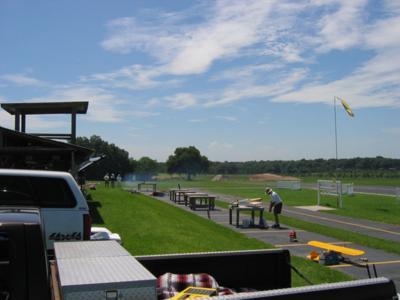 Taylor Road LandfillThe 42-acre Taylor Road Landfill Superfund site is located in Hillsborough County, Florida. The municipal landfill is one of three landfills owned and operated by Hillsborough County. In October 1979, EPA discovered contamination in site monitoring wells. In 1983, EPA placed the site on the National Priorities List (NPL). Hillsborough County closed all three landfills under the state landfill closure program. Closure activities included capping of waste, a vegetative cover, and gas and leachate collection. The cleanup plan included addressing groundwater contamination, connecting nearby residences to the public water supply and restricting use of drinking water wells. After cleanup, the County established a recycling center, a community collection center, a household chemical and electronics collection center, a site maintenance facility, and an environmental field office at the site. Hillsborough County collaborated with the Tampa Radio-Control Aircraft Club and the Academy of Model Aeronautics on a model airplane park. The park includes a paved runway and covered work areas. The County also collaborated with the U.S. Department of Energy to evaluate the use of methane gas from the landfills as a potential renewable energy resource. In 2010, EPA Region 4 presented Hillsborough County with its Excellence in Site Reuse award, recognizing the County’s leadership and innovation in returning the site to productive and beneficial use.
Taylor Road LandfillThe 42-acre Taylor Road Landfill Superfund site is located in Hillsborough County, Florida. The municipal landfill is one of three landfills owned and operated by Hillsborough County. In October 1979, EPA discovered contamination in site monitoring wells. In 1983, EPA placed the site on the National Priorities List (NPL). Hillsborough County closed all three landfills under the state landfill closure program. Closure activities included capping of waste, a vegetative cover, and gas and leachate collection. The cleanup plan included addressing groundwater contamination, connecting nearby residences to the public water supply and restricting use of drinking water wells. After cleanup, the County established a recycling center, a community collection center, a household chemical and electronics collection center, a site maintenance facility, and an environmental field office at the site. Hillsborough County collaborated with the Tampa Radio-Control Aircraft Club and the Academy of Model Aeronautics on a model airplane park. The park includes a paved runway and covered work areas. The County also collaborated with the U.S. Department of Energy to evaluate the use of methane gas from the landfills as a potential renewable energy resource. In 2010, EPA Region 4 presented Hillsborough County with its Excellence in Site Reuse award, recognizing the County’s leadership and innovation in returning the site to productive and beneficial use.
Last updated September 2019
As of December 2019, EPA had data on one on-site business. EPA did not have further economic details related to this business. For additional information click here.
For more information:
- Sites in Reuse: Seffner Former Industrial Property (PDF) (1 pg, 1.7 MB)
- News Release: EPA Recognizes Hillsborough County, Fl., for Taylor Road Landfill Superfund Site Reuse
- Superfund Site Profile Page
Tower Chemical Co.
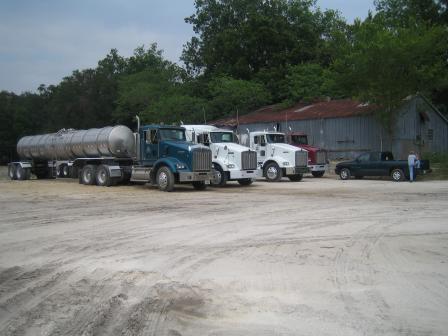 Tower Chemical Co.The 16-acre Tower Chemical Co. Superfund site is located about 5 miles east of Clermont, Florida. From 1957 to 1980, Tower Chemical Co. operated a manufacturing facility on site. The facility’s waste disposal practices left contamination on site. EPA placed the site on the National Priorities List (NPL) in 1983. Cleanup activities included soil removal, groundwater treatment and monitoring, and restrictions on land and groundwater use. In 2005, new owners purchased a 15-acre parcel at the site. The new owners converted the area into a storage facility for recreational vehicles, boats, trailers and other commercial vehicles. The owners cleared the remainder of the parcel for future expansion. An auto-repair shop also continues to operate in a building on site.
Tower Chemical Co.The 16-acre Tower Chemical Co. Superfund site is located about 5 miles east of Clermont, Florida. From 1957 to 1980, Tower Chemical Co. operated a manufacturing facility on site. The facility’s waste disposal practices left contamination on site. EPA placed the site on the National Priorities List (NPL) in 1983. Cleanup activities included soil removal, groundwater treatment and monitoring, and restrictions on land and groundwater use. In 2005, new owners purchased a 15-acre parcel at the site. The new owners converted the area into a storage facility for recreational vehicles, boats, trailers and other commercial vehicles. The owners cleared the remainder of the parcel for future expansion. An auto-repair shop also continues to operate in a building on site.
Last updated September 2019
As of December 2019, EPA had data on 2 on-site businesses. These businesses employed 11 people and generated an estimated $615,000 in annual sales revenue. For additional information click here.
For more information:
Trans Circuits, Inc.
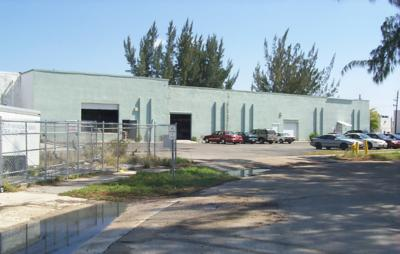 Trans Circuits, Inc.The 1-acre Trans Circuits, Inc. Superfund site is located in an industrial park in Lake Park, Palm Beach County, Florida. From 1978 to 1988, Trans Circuits operated a manufacturing and electroplating facility for components used in electronic circuit boards. Liquid wastes in an on-site evaporation pond leaked into site soils and groundwater. Following site investigations and initial cleanup actions, EPA placed the site on the National Priorities List (NPL) in 2000. Cleanup included removal of contaminated soil, treatment of contaminated groundwater, restriction of certain land and groundwater uses, and replacement of a public well. After cleanup, Florida Aero Precision, a gas turbine and aerospace parts manufacturing company located nearby, expressed interest in expansion opportunities at the site. Following extensive coordination with EPA and the State, Florida Aero Precision purchased the site property in 2011. The company began production operations in its new facility on site in 2013.
Trans Circuits, Inc.The 1-acre Trans Circuits, Inc. Superfund site is located in an industrial park in Lake Park, Palm Beach County, Florida. From 1978 to 1988, Trans Circuits operated a manufacturing and electroplating facility for components used in electronic circuit boards. Liquid wastes in an on-site evaporation pond leaked into site soils and groundwater. Following site investigations and initial cleanup actions, EPA placed the site on the National Priorities List (NPL) in 2000. Cleanup included removal of contaminated soil, treatment of contaminated groundwater, restriction of certain land and groundwater uses, and replacement of a public well. After cleanup, Florida Aero Precision, a gas turbine and aerospace parts manufacturing company located nearby, expressed interest in expansion opportunities at the site. Following extensive coordination with EPA and the State, Florida Aero Precision purchased the site property in 2011. The company began production operations in its new facility on site in 2013.
Last updated September 2019
As of December 2019, EPA had data on one on-site business. This business employed 9 people and generated an estimated $14,637,000 in annual sales revenue. For additional information click here.
For more information:
Tri-City Oil Conservationist, Inc.
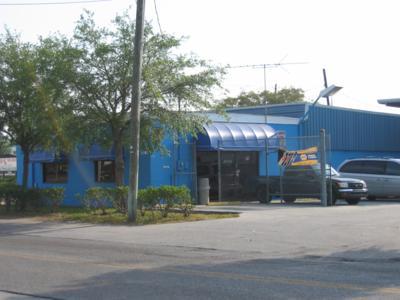 Tri-City Oil Conservationist, Inc.The quarter-acre Tri-City Oil Conservationist, Inc. Superfund site is located outside Tampa, Florida. A waste oil storage and distribution center operated on site until 1983. Operating conditions caused spills and leaks from tanks and lines. In 1982, a 3,000-gallon spill of waste oil occurred at the site. The Florida Department of Environmental Regulation (FDER) identified contamination in soil and sludge samples from the spill area. After the owners refused an FDER request to clean up the spill, EPA took immediate action to clean up contamination under the Superfund program. EPA placed the site on the National Priorities List (NPL) in 1984. EPA removed and disposed of contaminated soil and removed storage tanks. EPA then replanted the area to prevent erosion. After cleanup, EPA took the site off the NPL in 1988. In 1990, Mike’s Garage purchased the site property and reused the original building as an auto repair business. The garage continues to operate at the site. In 2009, EPA’s Superfund Redevelopment Initiative and Region 4 supported a regional seed project. The seed project evaluated the site’s status relative to EPA’s Sitewide Ready for Anticipated Use (SWRAU) measure. In 2010, EPA determined the site meets SWRAU criteria.
Tri-City Oil Conservationist, Inc.The quarter-acre Tri-City Oil Conservationist, Inc. Superfund site is located outside Tampa, Florida. A waste oil storage and distribution center operated on site until 1983. Operating conditions caused spills and leaks from tanks and lines. In 1982, a 3,000-gallon spill of waste oil occurred at the site. The Florida Department of Environmental Regulation (FDER) identified contamination in soil and sludge samples from the spill area. After the owners refused an FDER request to clean up the spill, EPA took immediate action to clean up contamination under the Superfund program. EPA placed the site on the National Priorities List (NPL) in 1984. EPA removed and disposed of contaminated soil and removed storage tanks. EPA then replanted the area to prevent erosion. After cleanup, EPA took the site off the NPL in 1988. In 1990, Mike’s Garage purchased the site property and reused the original building as an auto repair business. The garage continues to operate at the site. In 2009, EPA’s Superfund Redevelopment Initiative and Region 4 supported a regional seed project. The seed project evaluated the site’s status relative to EPA’s Sitewide Ready for Anticipated Use (SWRAU) measure. In 2010, EPA determined the site meets SWRAU criteria.
Last updated September 2019
As of December 2019, EPA had data on one on-site business. This business employed 4 people and generated an estimated $440,000 in annual sales revenue. For additional information click here.
For more information:
- Sites in Reuse: Hillsborough County Commercial Property (PDF) (1 pg, 1.5 MB)
- Superfund Site Profile Page
United Metals
The 175-acre United Metals Inc. Superfund site is located in Marianna, Florida. The site is about 1.5 miles east of the Chipola River. A battery recycling facility operated on 24 acres of the site from 1979 to 1991. Site operations contaminated surface soil, sediment and groundwater. EPA placed the site on the National Priorities List (NPL) in 2003. EPA removed hazardous waste debris and treated soil and sediment. EPA then contained these materials in capped, vegetated cells on site. EPA backfilled soil removal areas with clean topsoil and replanted 500 dogwood trees. EPA also restored wetlands as part of the cleanup. Groundwater monitoring is ongoing. The site is currently used as a vehicle salvage and scrap metal recycling yard.
Last updated September 2019
As of December 2019, EPA had data on one on-site business. EPA did not have further economic details related to this business. For additional information click here.
For more information:
Varsol Spill
The Varsol Spill Superfund site is located in Miami, Florida. It is part of Miami International Airport. The airport is located less than a half-mile south of the Lower Miami Springs Municipal Well Field. Starting in 1966, airport industrial operations resulted in spills and leaks of hydrocarbons totaling nearly 2 million gallons. These spills included an underground pipeline leak that discharged about 1.6 million gallons of varsol, a petroleum solvent. The airport discovered the solvent in the northeast section of the airport around 1970. Investigations verified surface water and groundwater contamination. EPA placed the site on the National Priorities List (NPL) in 1983. Later that year, Dade County installed 43 monitoring wells to determine the extent and magnitude of spilled jet fuel. Dade County then installed recovery wells in the Concourse E area. Through May 1984, cleanup activities recovered over 102,000 gallons of jet fuel. A study in 1985 found the area was free of petroleum solvent. Based on study findings, EPA took the site off the NPL in 1988. The area remains part of Miami International Airport.
Last updated September 2019
As of December 2019, EPA had data on one on-site business. EPA did not have further economic details related to this business. For additional information click here.
For more information:
Wilson Concepts of Florida, Inc.
 Wilson Concepts of Florida, Inc.The 2-acre Wilson Concepts of Florida, Inc. Superfund site is located in Pompano Beach, Florida. Wilson Concepts operated a precision parts manufacturing facility on site from 1967 to 1987. Waste handling practices resulted in soil and groundwater contamination. EPA placed the site on the National Priorities List (NPL) in 1989. After further investigation, EPA determined that the site did not pose a risk to human health or the environment. EPA took the site off the NPL in 1995 after determining that site groundwater met federal drinking water standards. Precision Metal Industries, a sheet metal manufacturer, currently operates on site.
Wilson Concepts of Florida, Inc.The 2-acre Wilson Concepts of Florida, Inc. Superfund site is located in Pompano Beach, Florida. Wilson Concepts operated a precision parts manufacturing facility on site from 1967 to 1987. Waste handling practices resulted in soil and groundwater contamination. EPA placed the site on the National Priorities List (NPL) in 1989. After further investigation, EPA determined that the site did not pose a risk to human health or the environment. EPA took the site off the NPL in 1995 after determining that site groundwater met federal drinking water standards. Precision Metal Industries, a sheet metal manufacturer, currently operates on site.
Last updated September 2019
As of December 2019, EPA had data on one on-site business. This business employed 81 people and generated an estimated $23,000,000 in annual sales revenue. For additional information click here.
For more information:
- Sites in Continued Use: Broward County Industrial Property (PDF) (1 pg, 1.5 MB)
- Superfund Site Profile Page
Woodbury Chemical Co. (Princeton Plant)
The 5-acre Woodbury Chemical Co. (Princeton Plant) Superfund site is located in Princeton, Florida. The Woodbury Chemical Company formulated, distributed and sold fertilizers and pesticides at the site. After a 1979 chemical spill at the site, the Miami-Dade County Department of Environmental Resources Management found high levels of contamination in drinking water wells on and near the site. EPA sampling also identified contamination in soil and groundwater. EPA placed the site on the National Priorities List (NPL) in 1990. The Woodbury Chemical Company removed contaminated soil from the chemical spill area. EPA’s final cleanup plan required groundwater monitoring but did not require further action for the soil. After groundwater monitoring results showed the site did not pose a significant risk to public health, EPA took the site off the NPL in 1995. Woodbury Chemical Company and a farm supply store continued to operate on site during cleanup activities. A residential development company purchased the site property in 2005. A vehicle maintenance and repair business and a salvage yard currently operate at the site.
Last updated September 2019
As of December 2019, EPA had data on one on-site business. This business employed one person and generated an estimated $122,857 in annual sales revenue. For additional information click here.
For more information:
- Sites in Continued Use: Princeton Commercial/Light Industrial Property (PDF) (1 pg, 1.6 MB)
- Superfund Site Profile Page
Yellow Water Road Dump
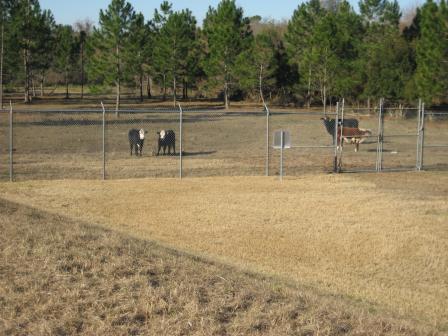 Yellow Water Road DumpThe Yellow Water Road Superfund site is located in Baldwin, Florida. In the early 1980s, the American Environmental Energy Corporation, the American Electric Corporation and the American Environmental Protection Corporation joined together to start a disposal facility at the site. During facility operations, chemicals spilled onto the ground and contaminated the soil. EPA placed the site on the National Priorities List (NPL) in 1986. Cleanup activities included treating contaminated soil, monitoring groundwater, and restricting well water use and certain land uses in the area. After cleanup finished, EPA took the site off the NPL in 1999. EPA’s carefully selected cleanup plan and cooperation and open communication among site stakeholders has enabled the continued use of part of the site for horse and cattle grazing.
Yellow Water Road DumpThe Yellow Water Road Superfund site is located in Baldwin, Florida. In the early 1980s, the American Environmental Energy Corporation, the American Electric Corporation and the American Environmental Protection Corporation joined together to start a disposal facility at the site. During facility operations, chemicals spilled onto the ground and contaminated the soil. EPA placed the site on the National Priorities List (NPL) in 1986. Cleanup activities included treating contaminated soil, monitoring groundwater, and restricting well water use and certain land uses in the area. After cleanup finished, EPA took the site off the NPL in 1999. EPA’s carefully selected cleanup plan and cooperation and open communication among site stakeholders has enabled the continued use of part of the site for horse and cattle grazing.
Last updated September 2019
As of December 2019, EPA did not have economic data related to on-site businesses, or economic data were not applicable due to site use. For additional information click here.
For more information:
Zellwood Ground Water Contamination
The 57-acre Zellwood Ground Water Contamination Superfund site is located in Zellwood, Florida, just outside of Orlando. Beginning in the 1960s, several industrial businesses operated on site, including the Drum Service Company (DSC). After emptying and cleaning steel drums, DSC left liquid waste and dirty water in unlined ponds and ditches. In the early 1980s, the Florida Department of Environmental Protection (FDEP) found large amounts of heavy metals in wastewater and groundwater samples. Later investigations found that several other companies operating at the site also contributed to the contamination. After the removal of contaminated drums, EPA added the site to the National Priorities List (NPL) in 1983. Cleanup activities included isolating heavily-contaminated soils inside a protected concrete structure and installing permanent monitoring wells. DSC, now known as Industrial Container Services, LLC of Florida, still occupies most of the site and continues to monitor groundwater quality. The site remains in active industrial use. Companies on site manufacture liquid cleaning products, machine lubricants and concrete.
Last updated September 2019
As of December 2019, EPA had data on 7 on-site businesses. These businesses employed 154 people and generated an estimated $34,491,000 in annual sales revenue. For additional information click here.
For more information:
